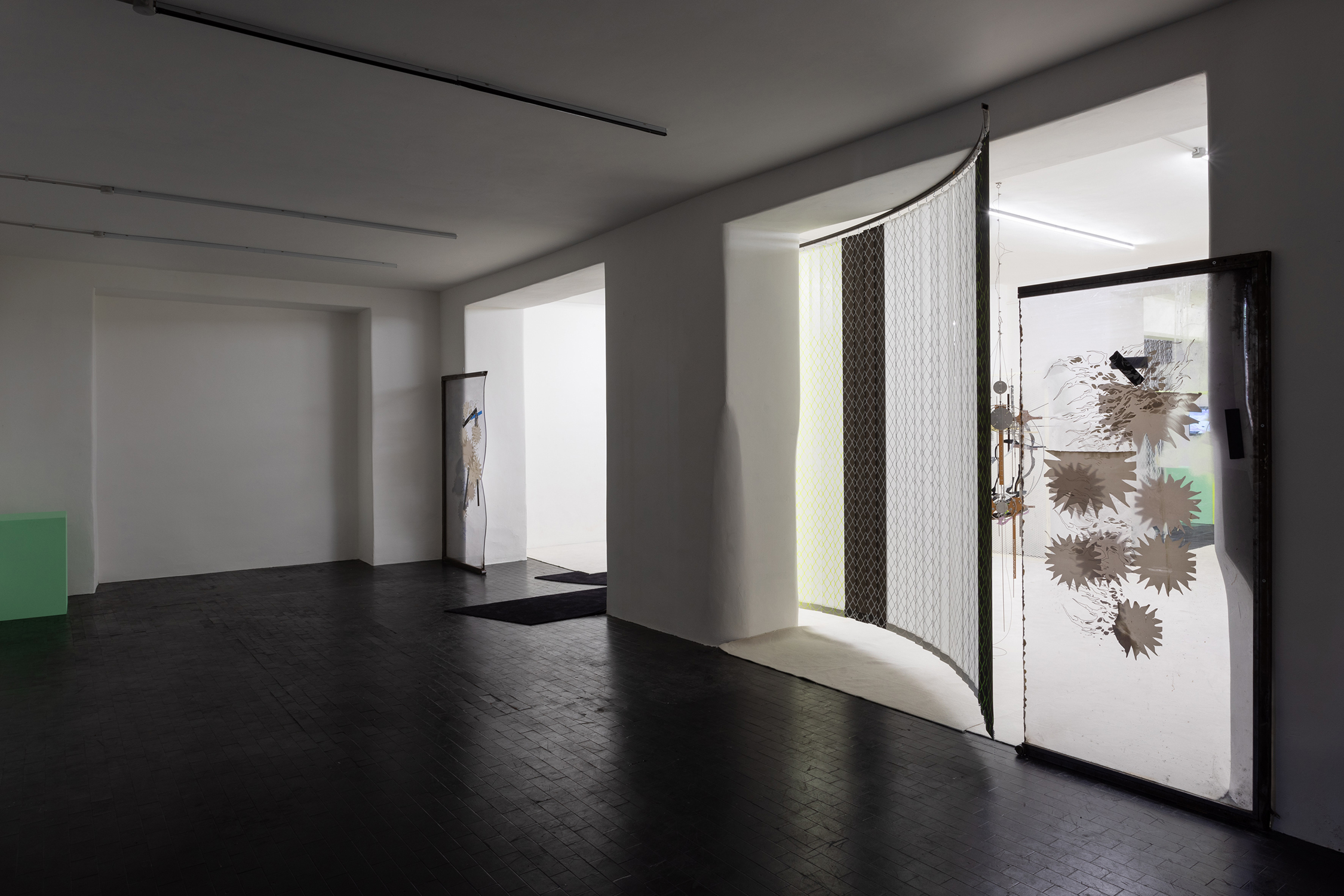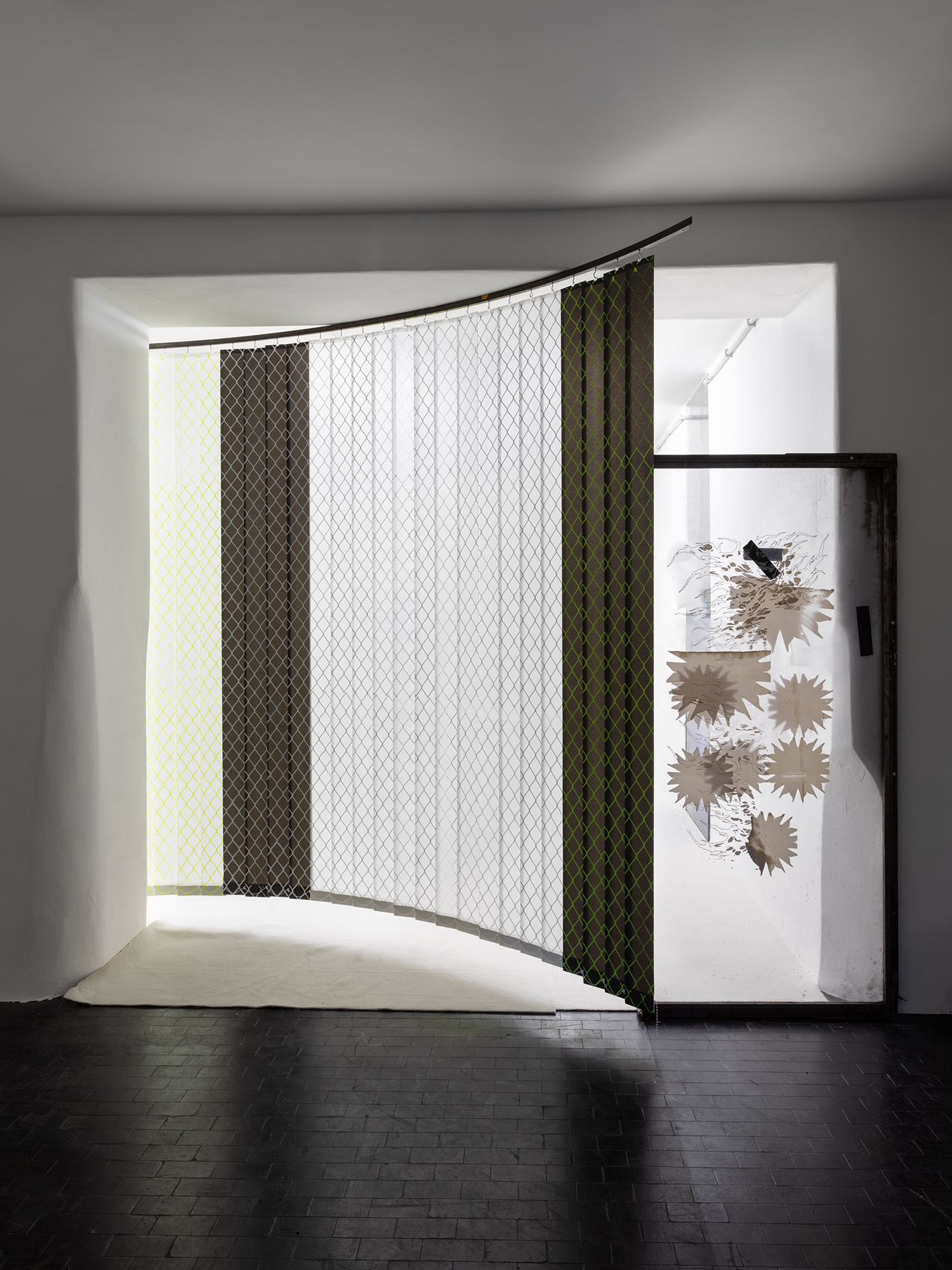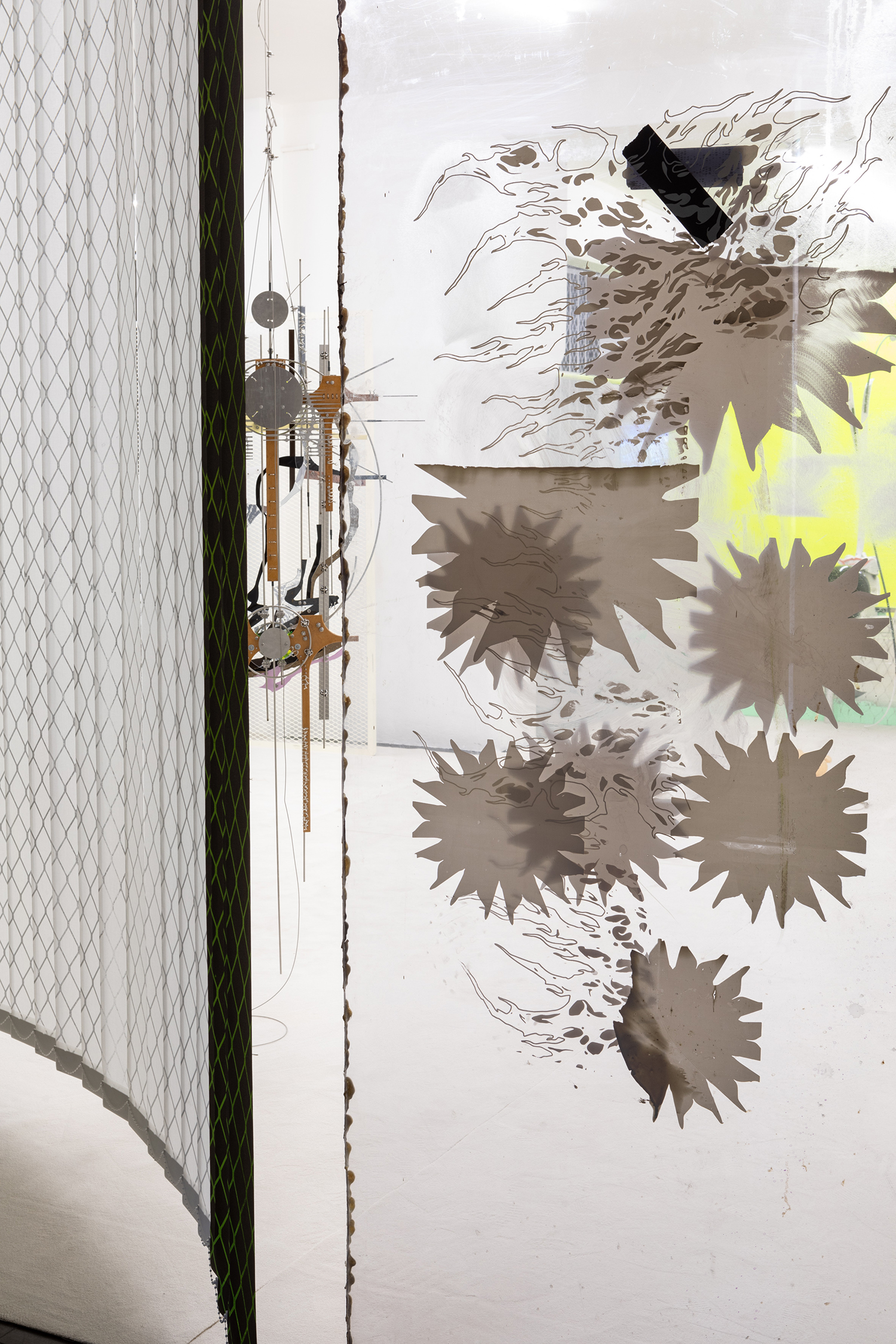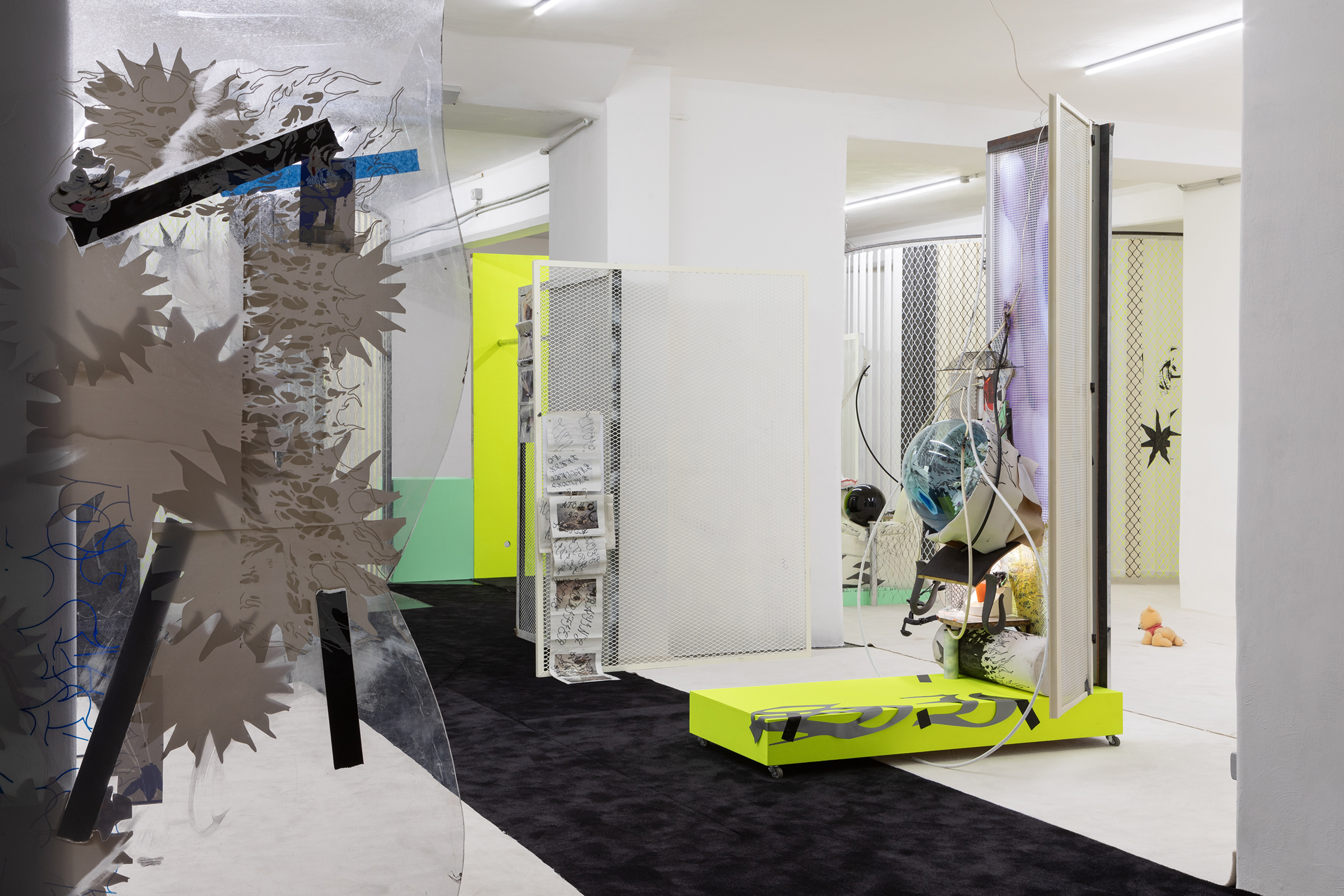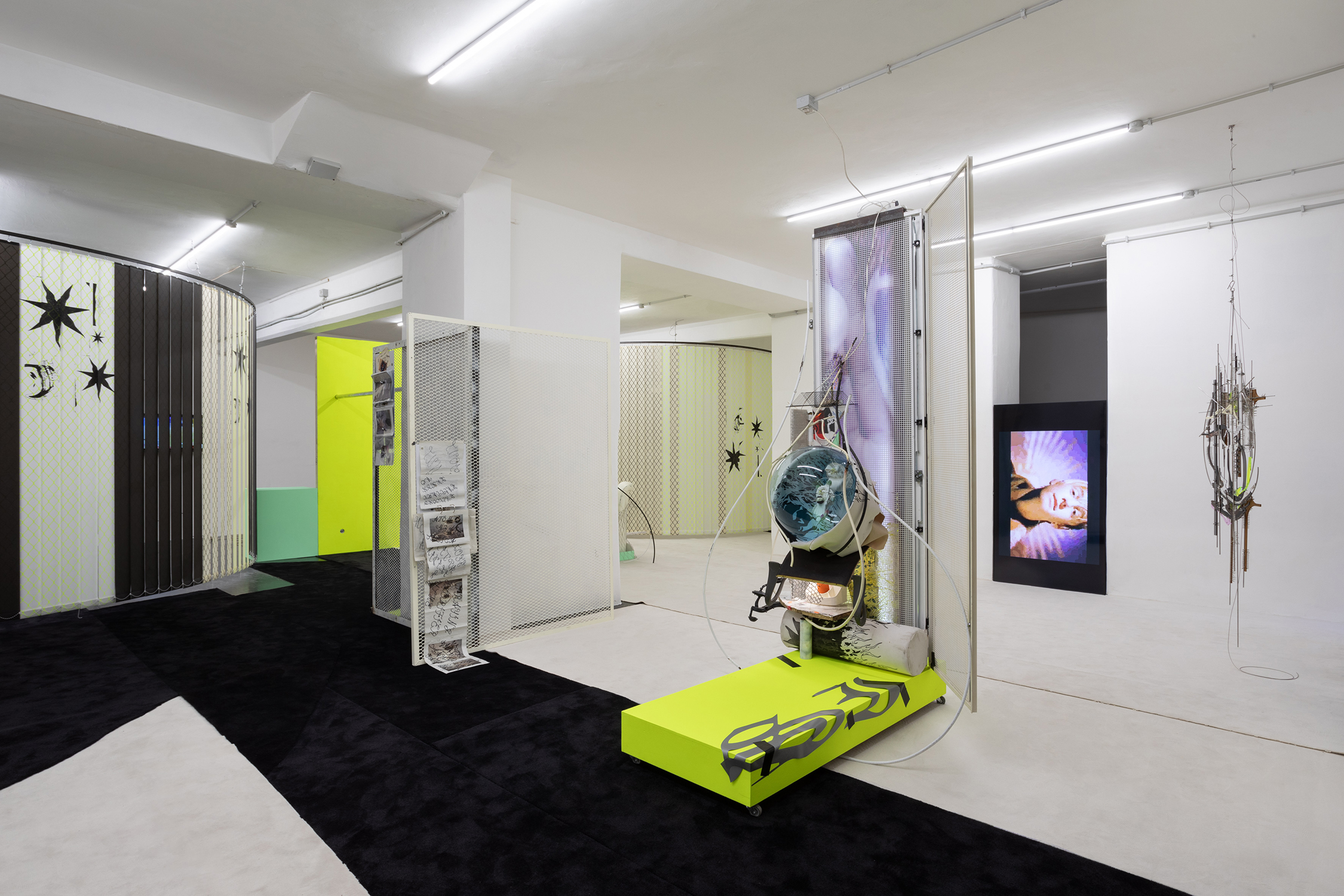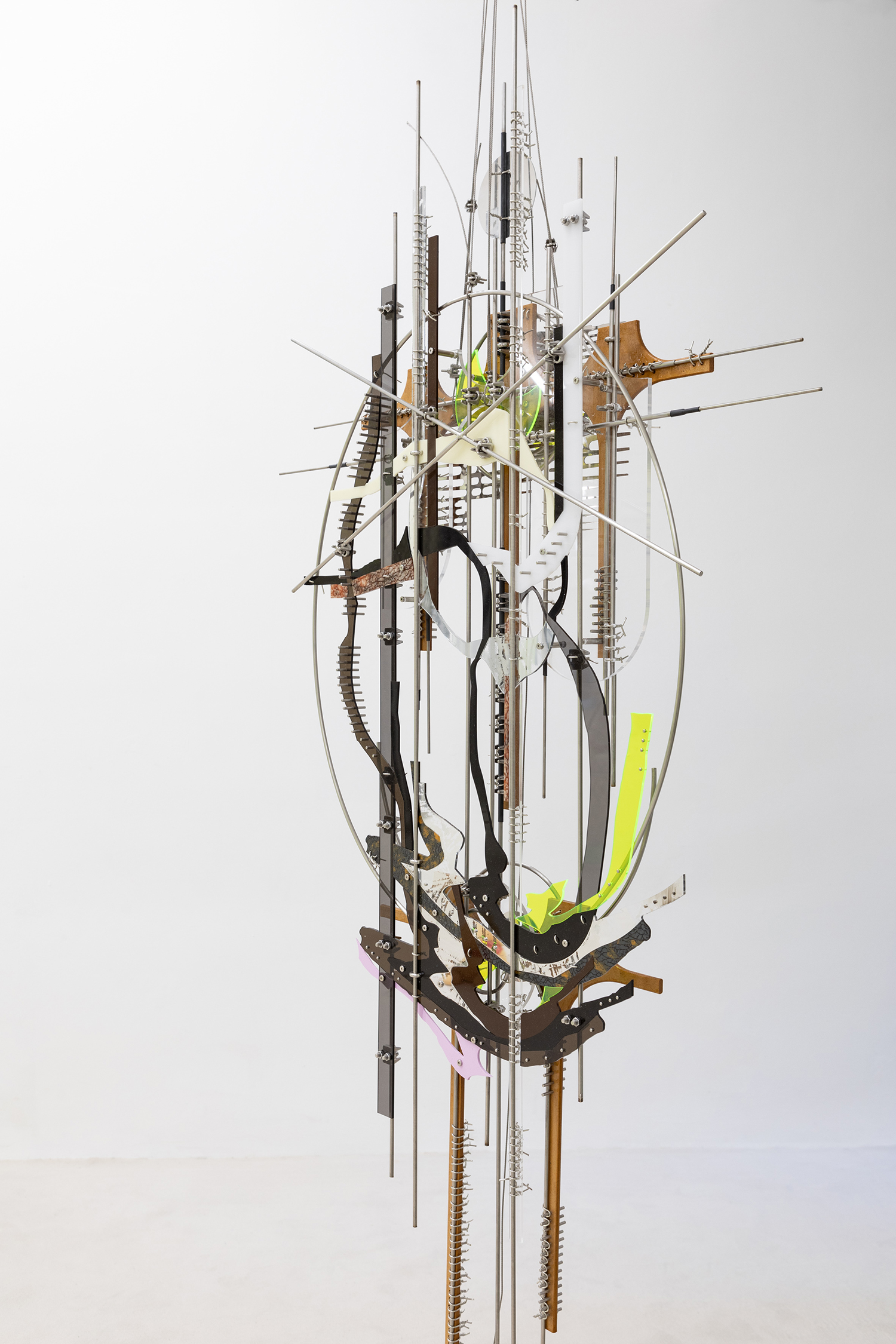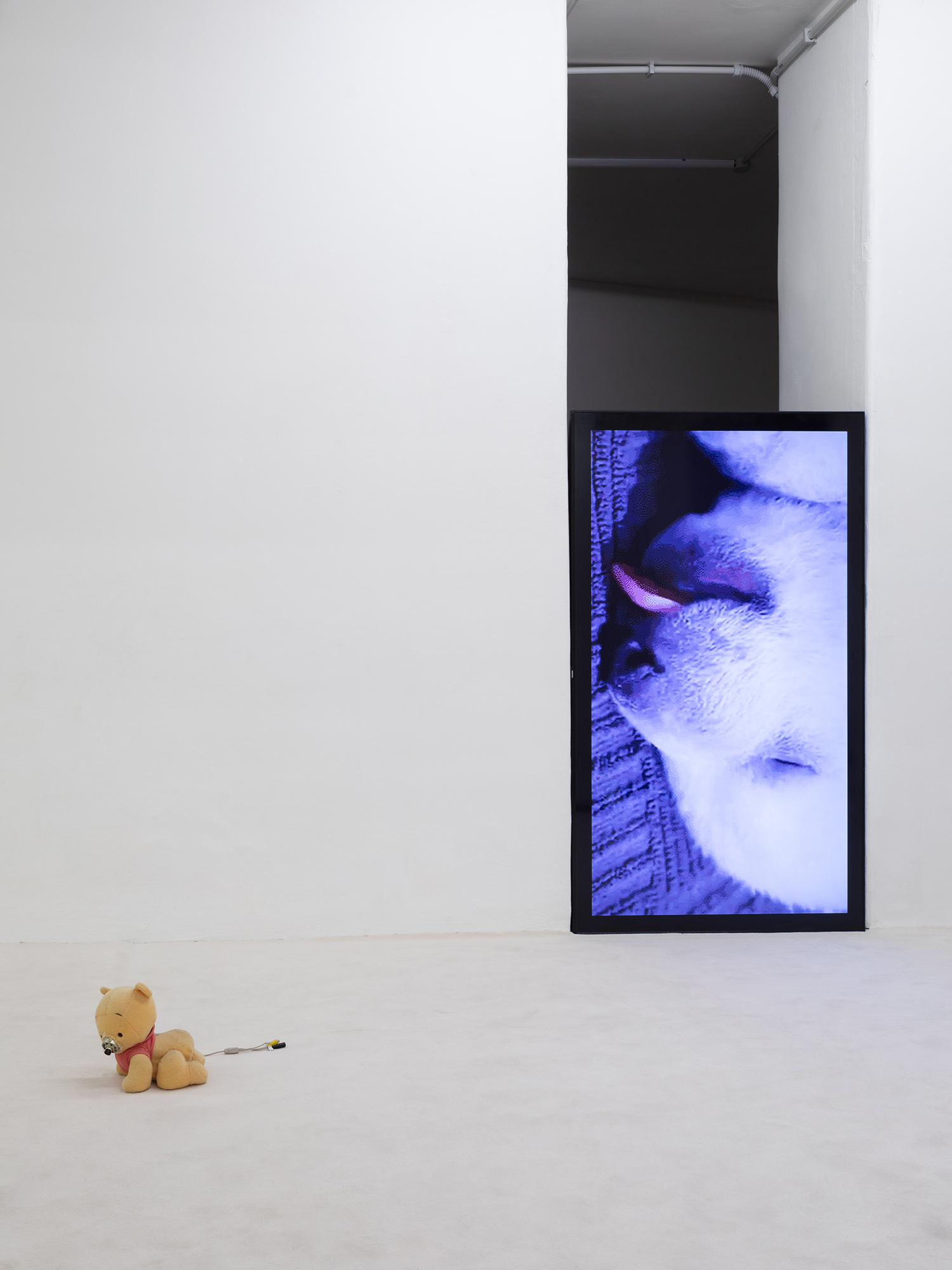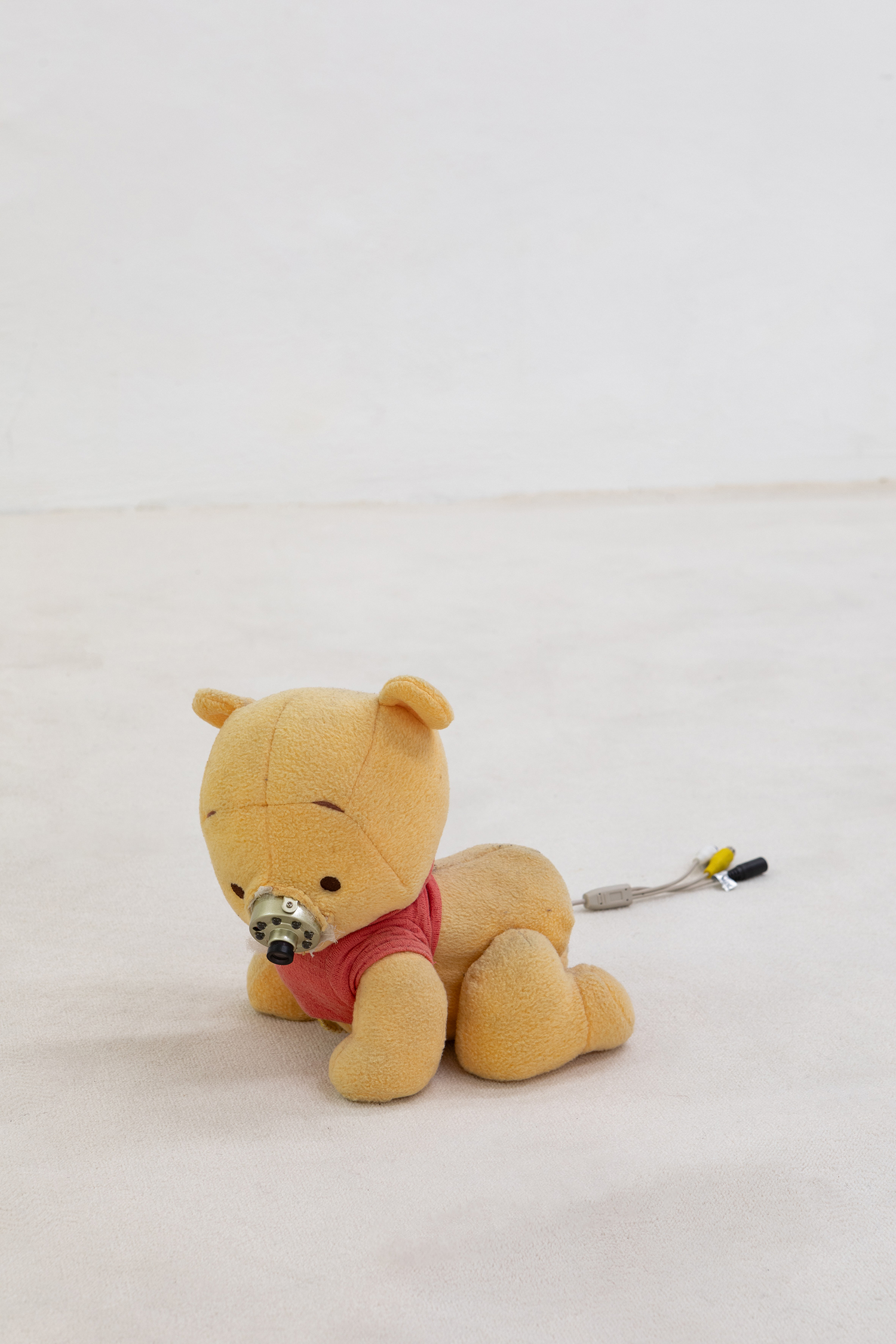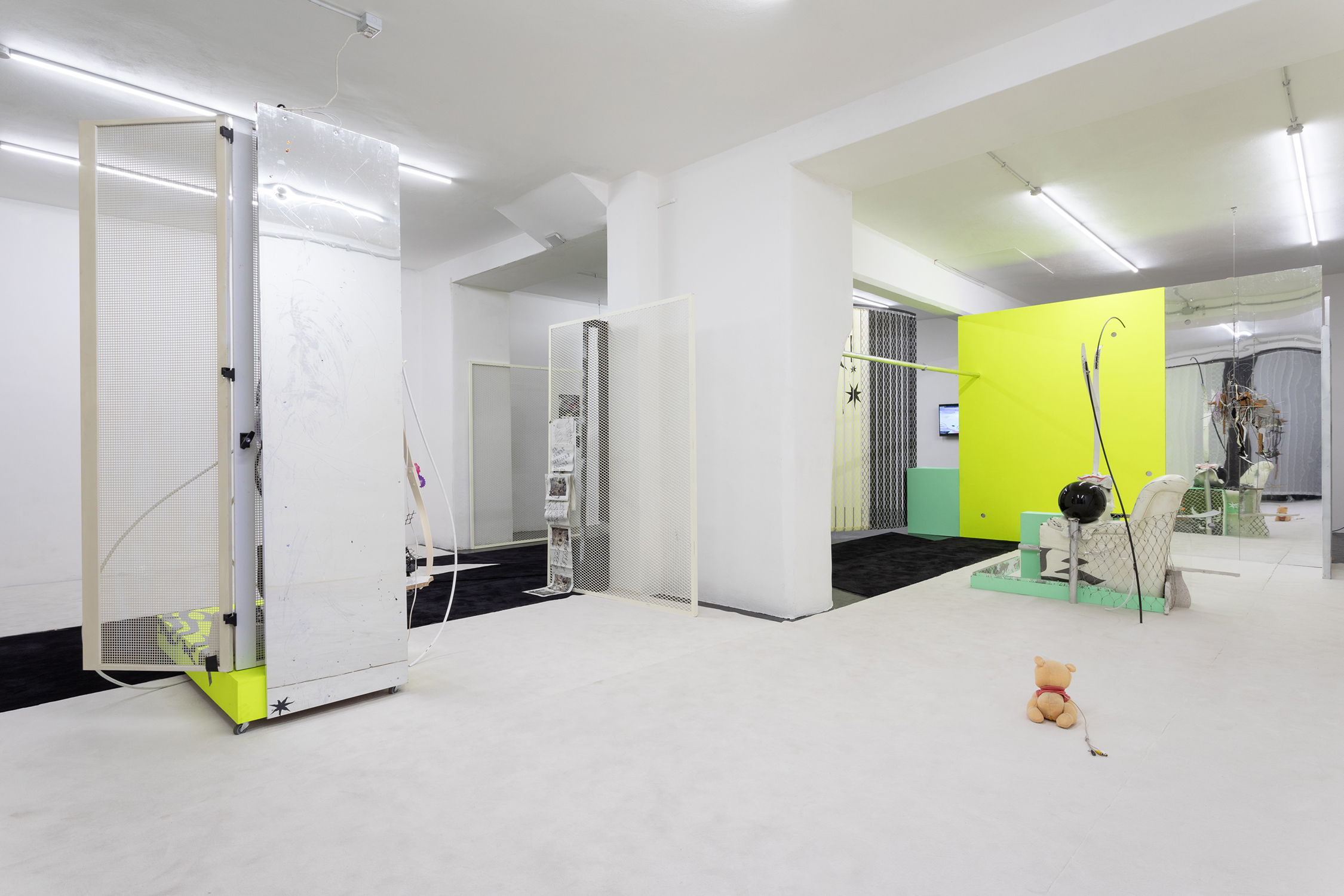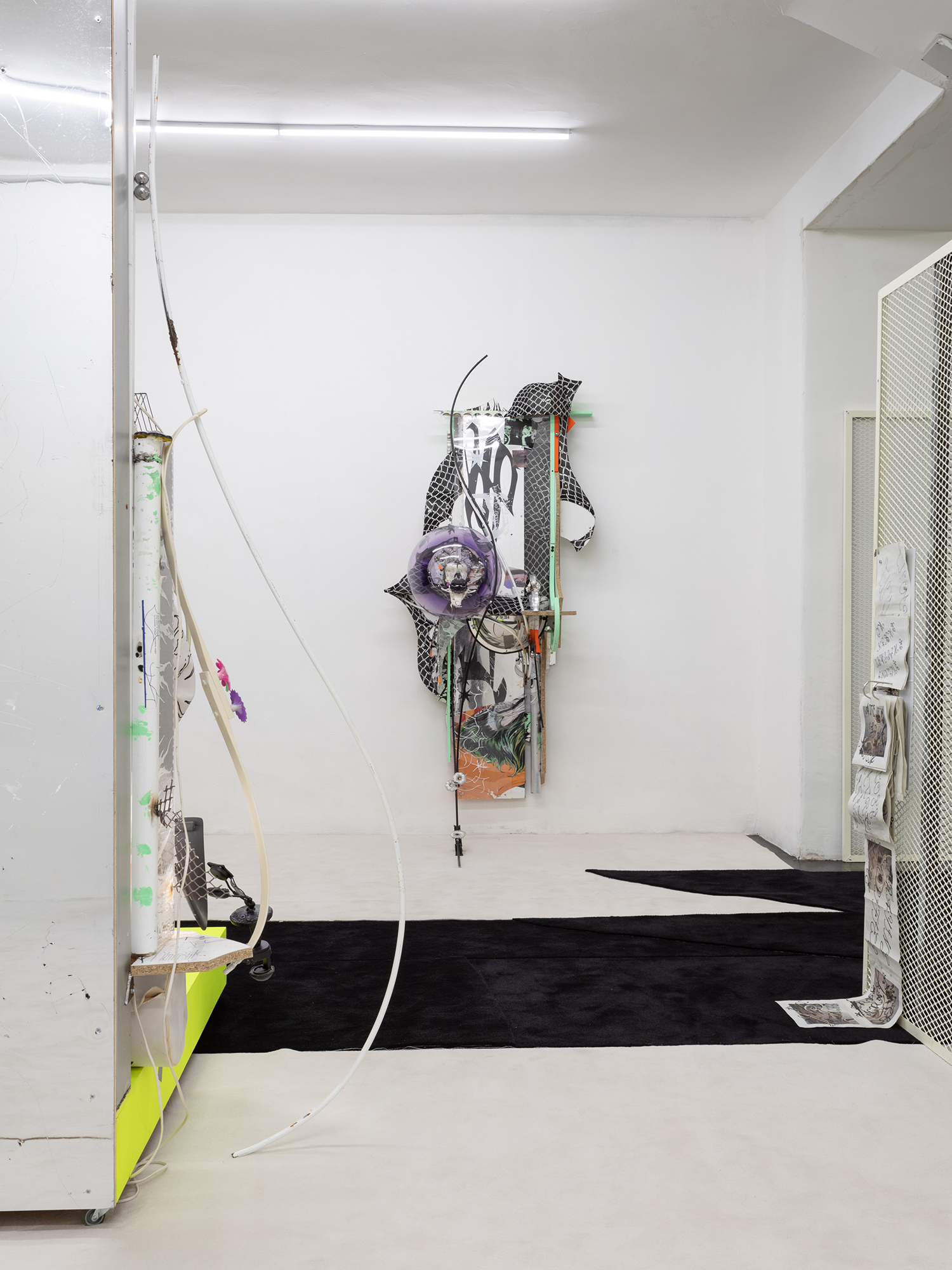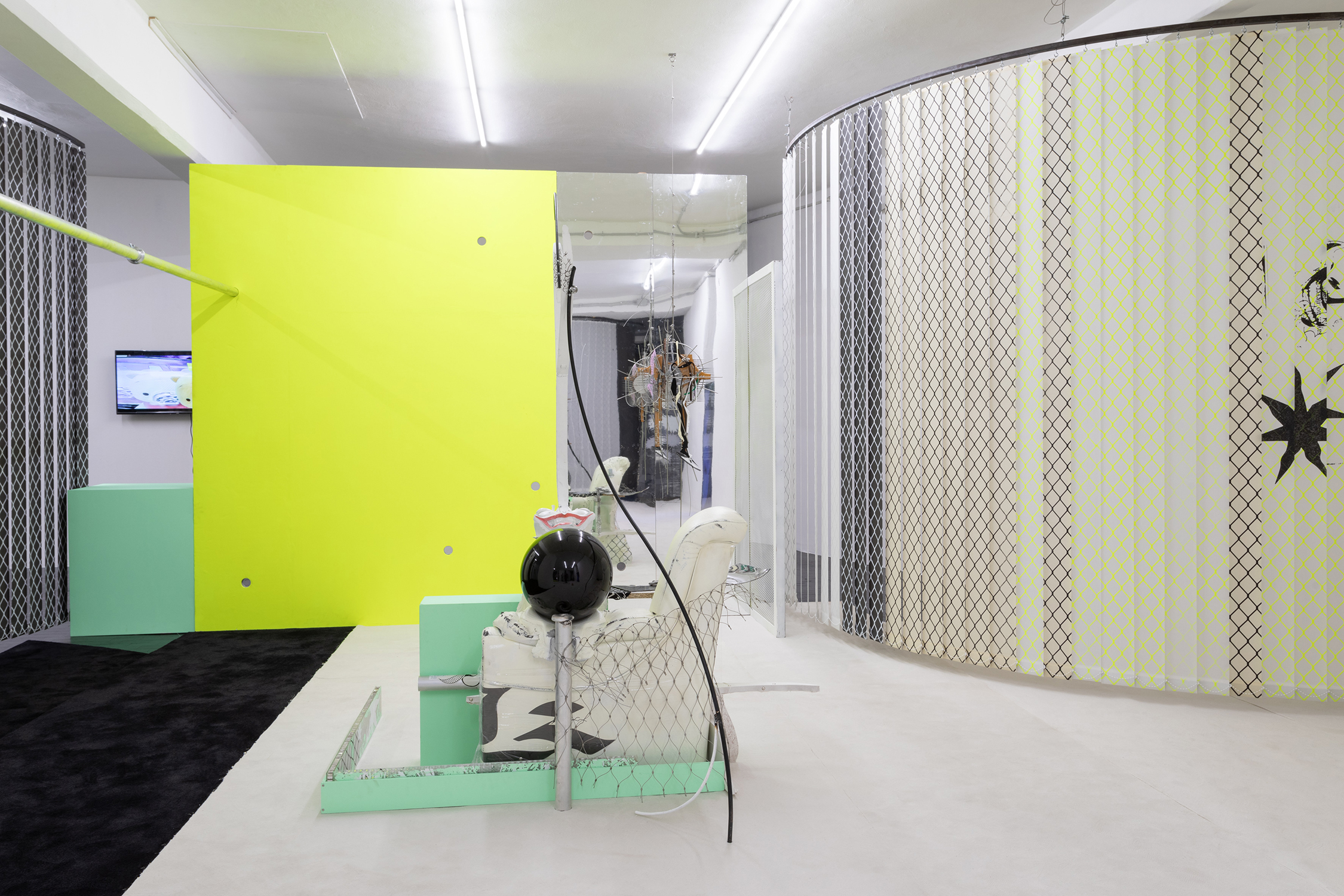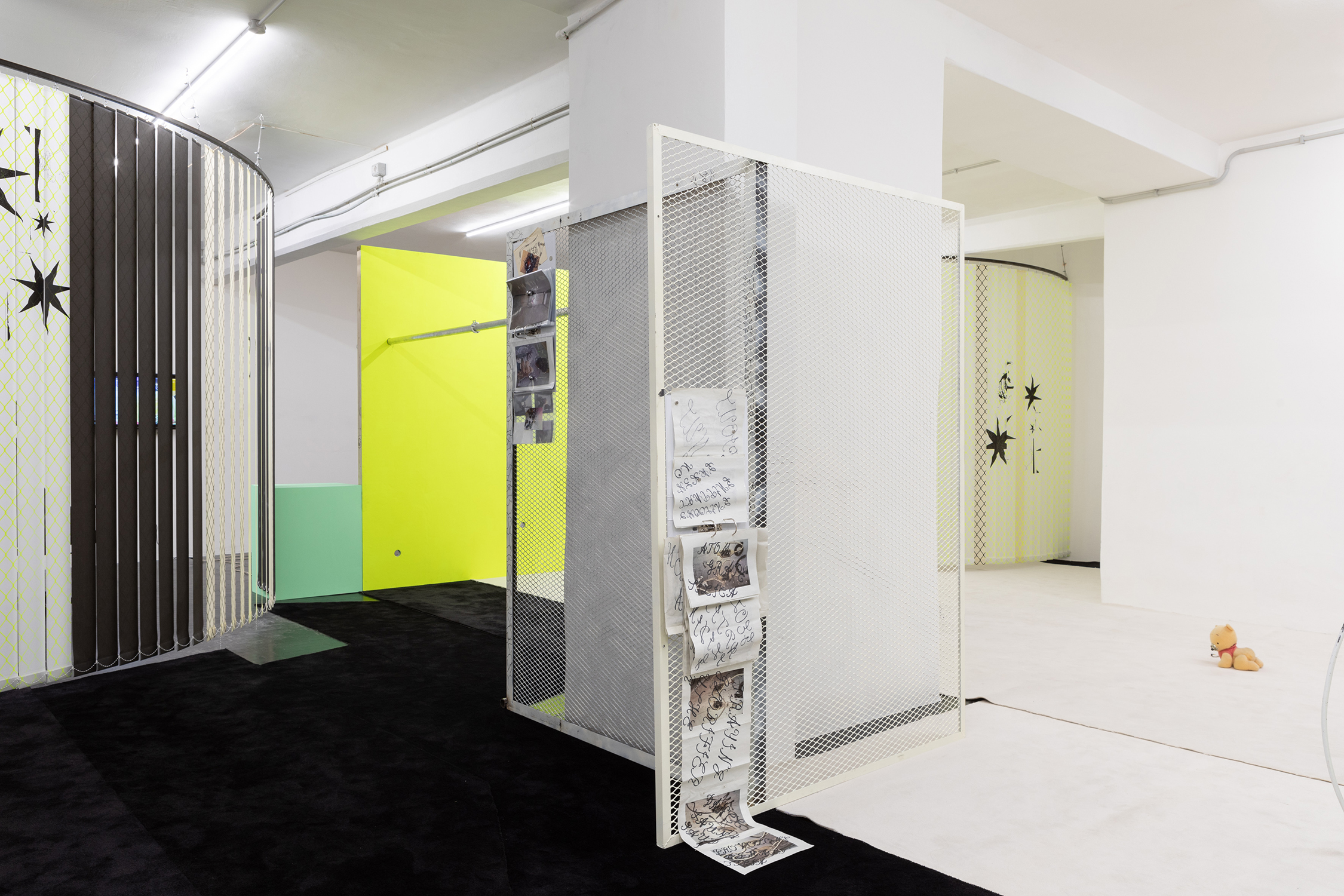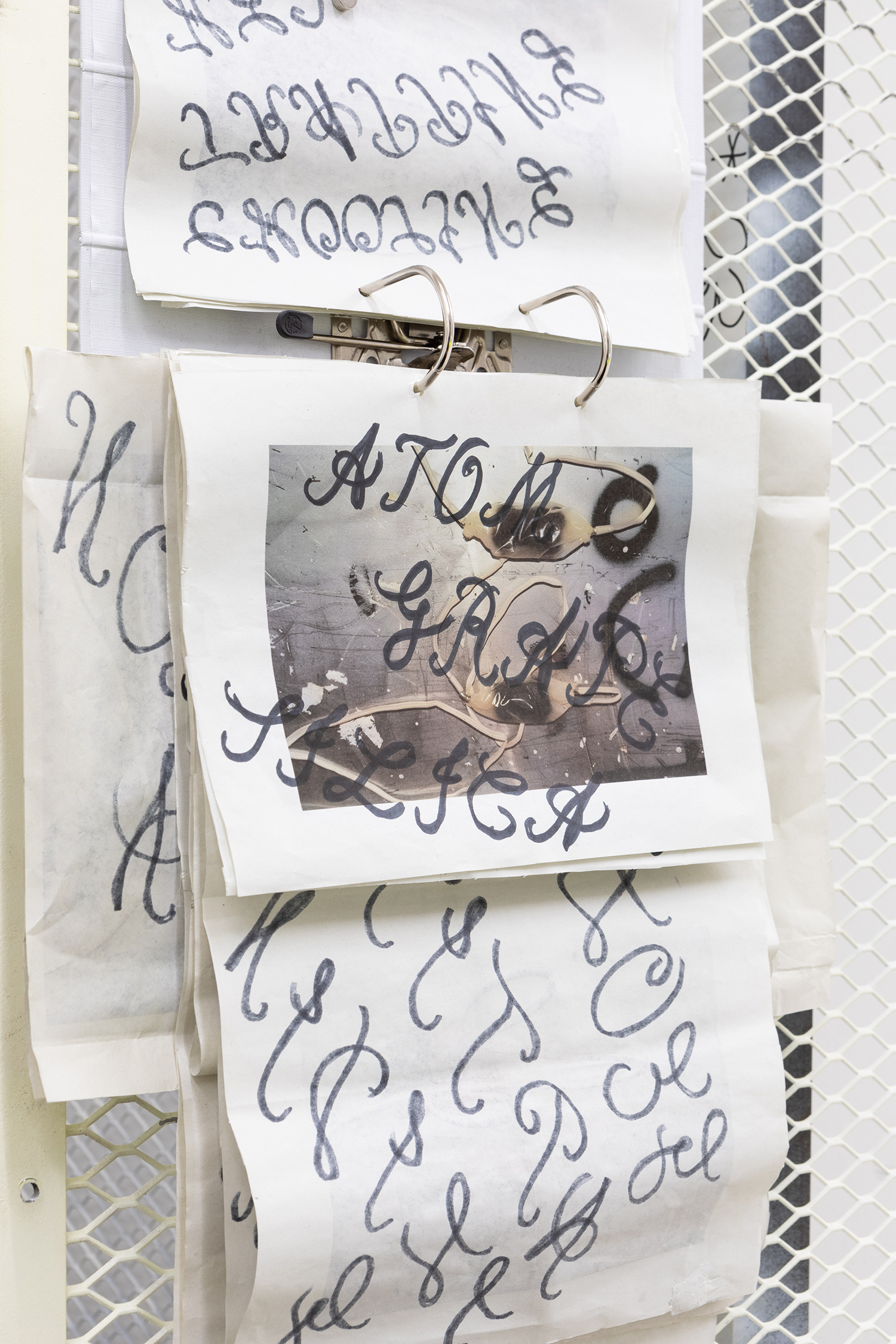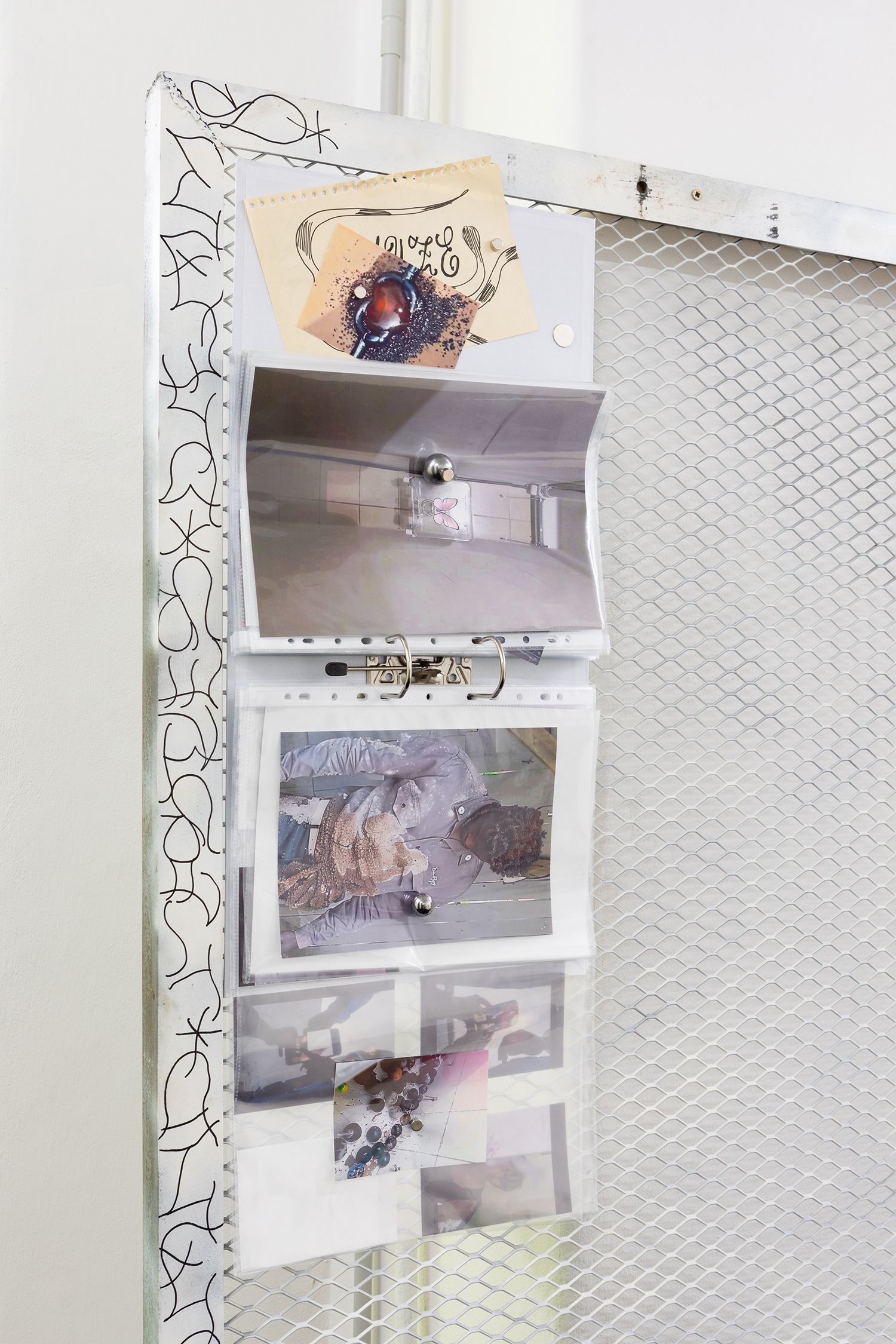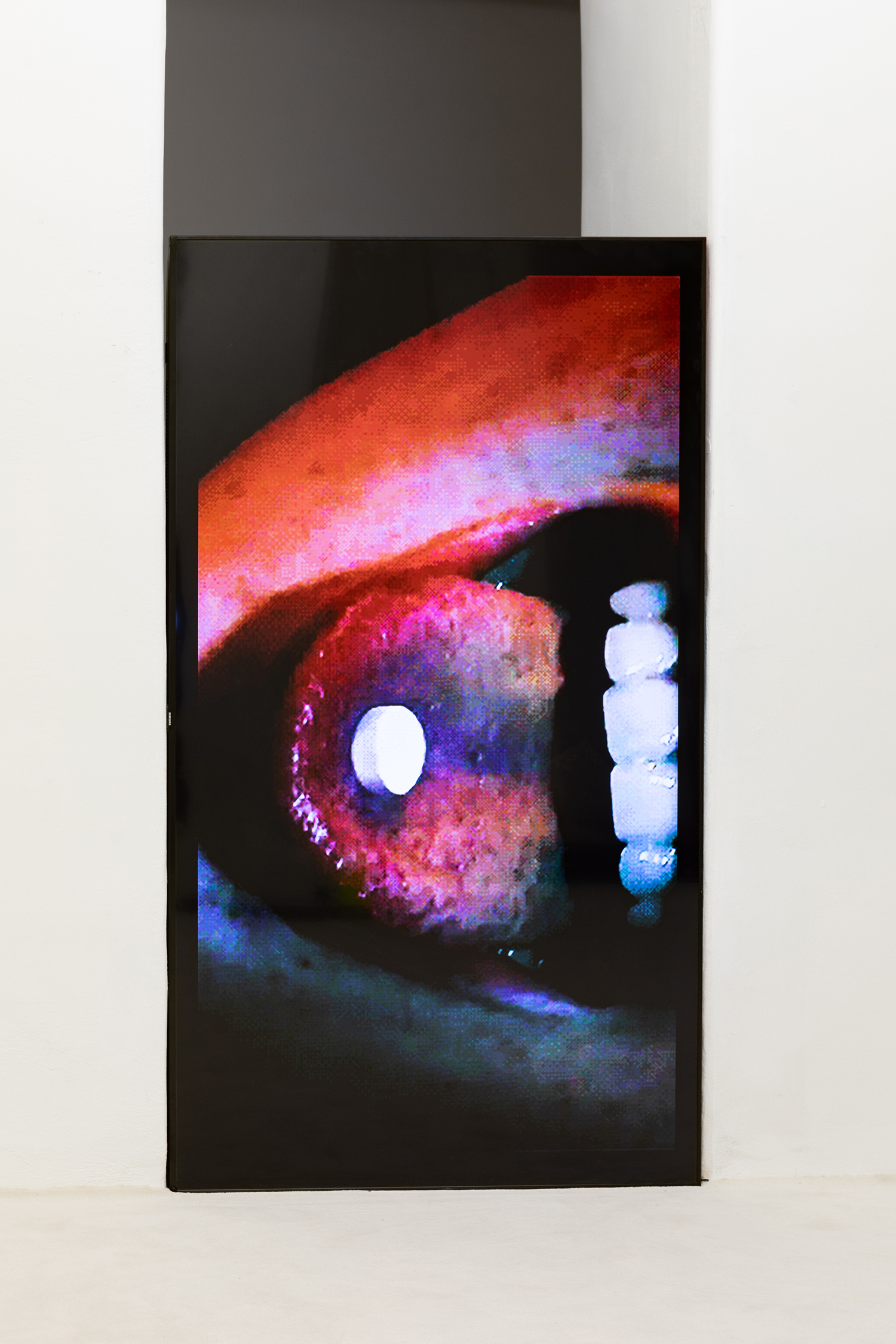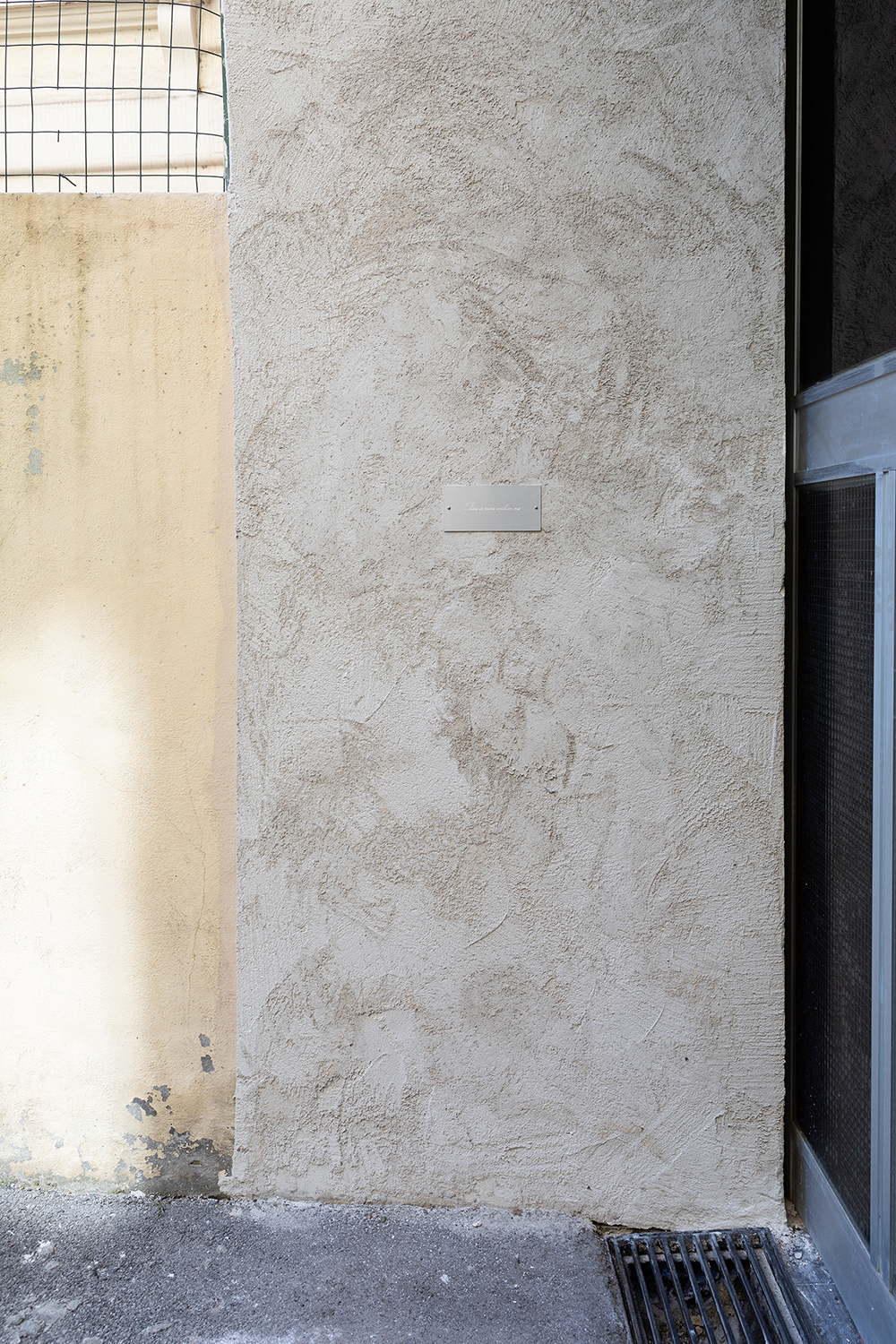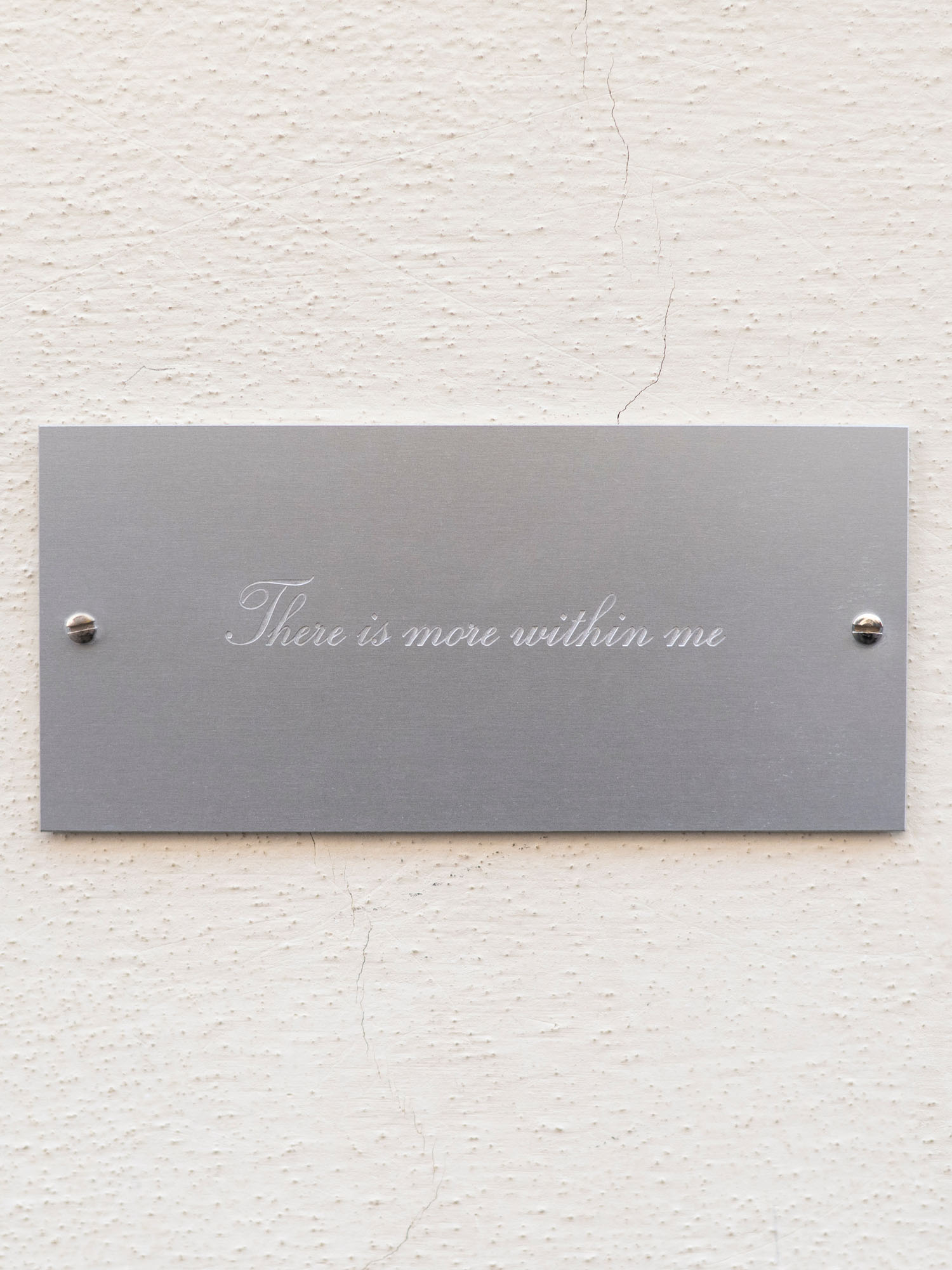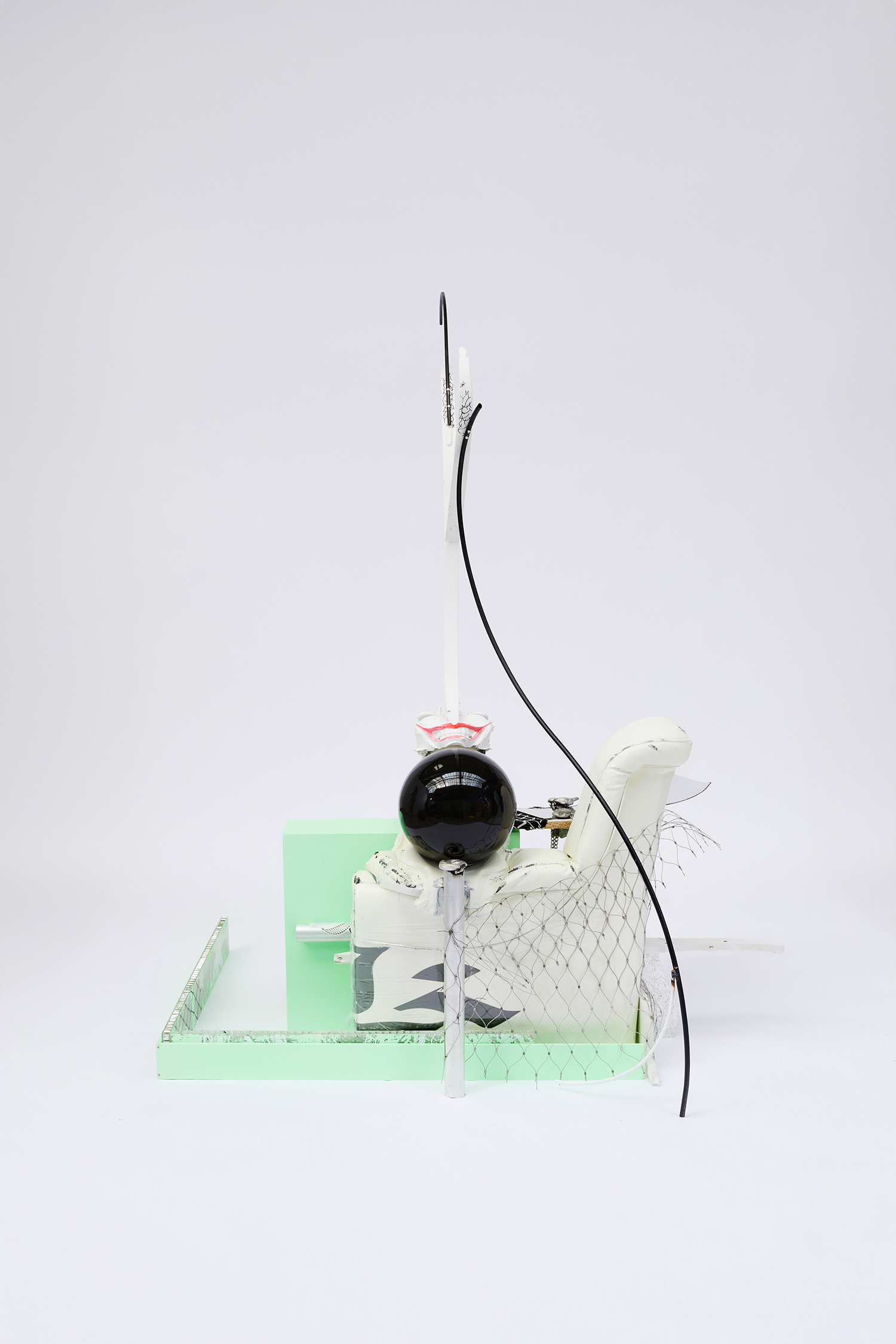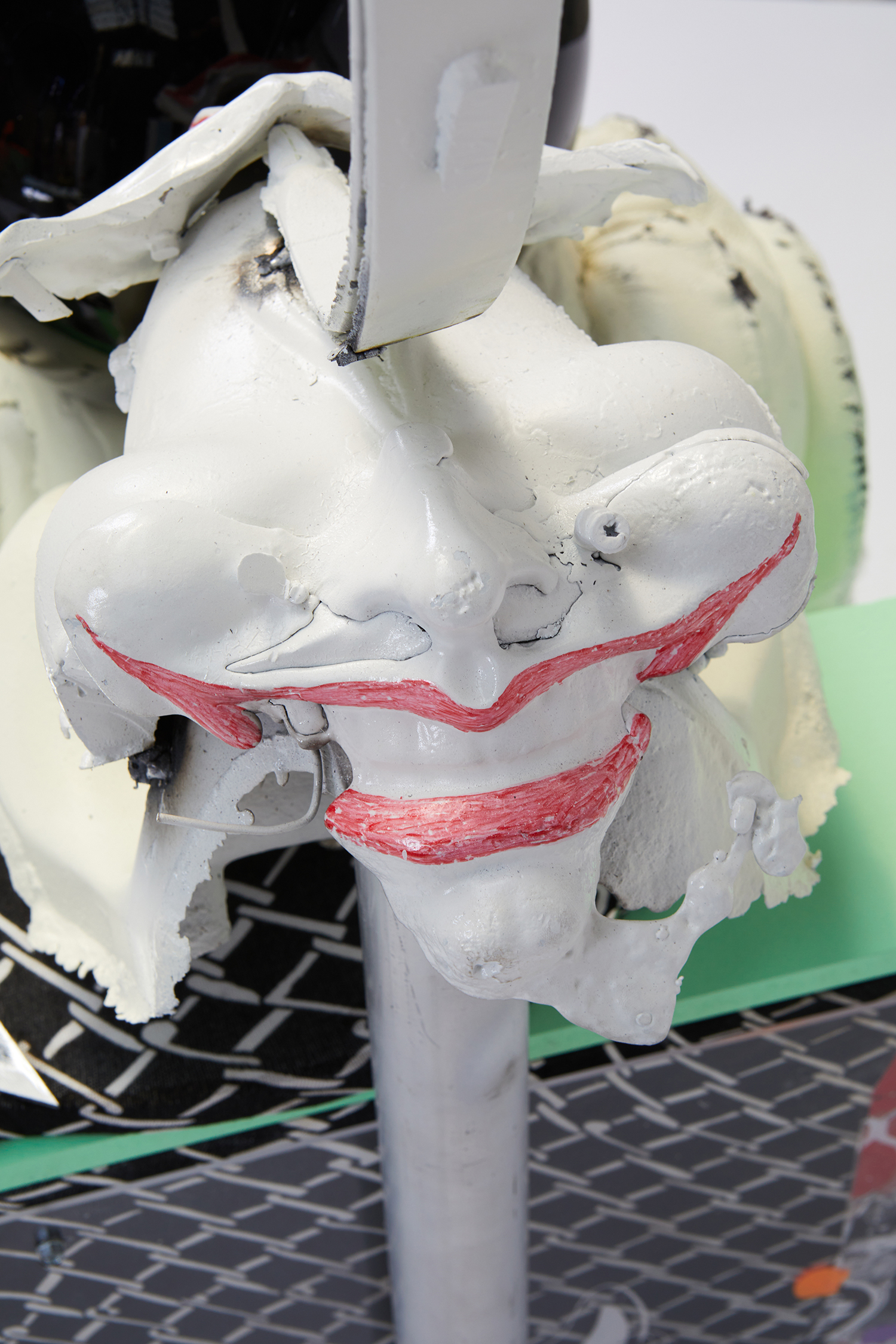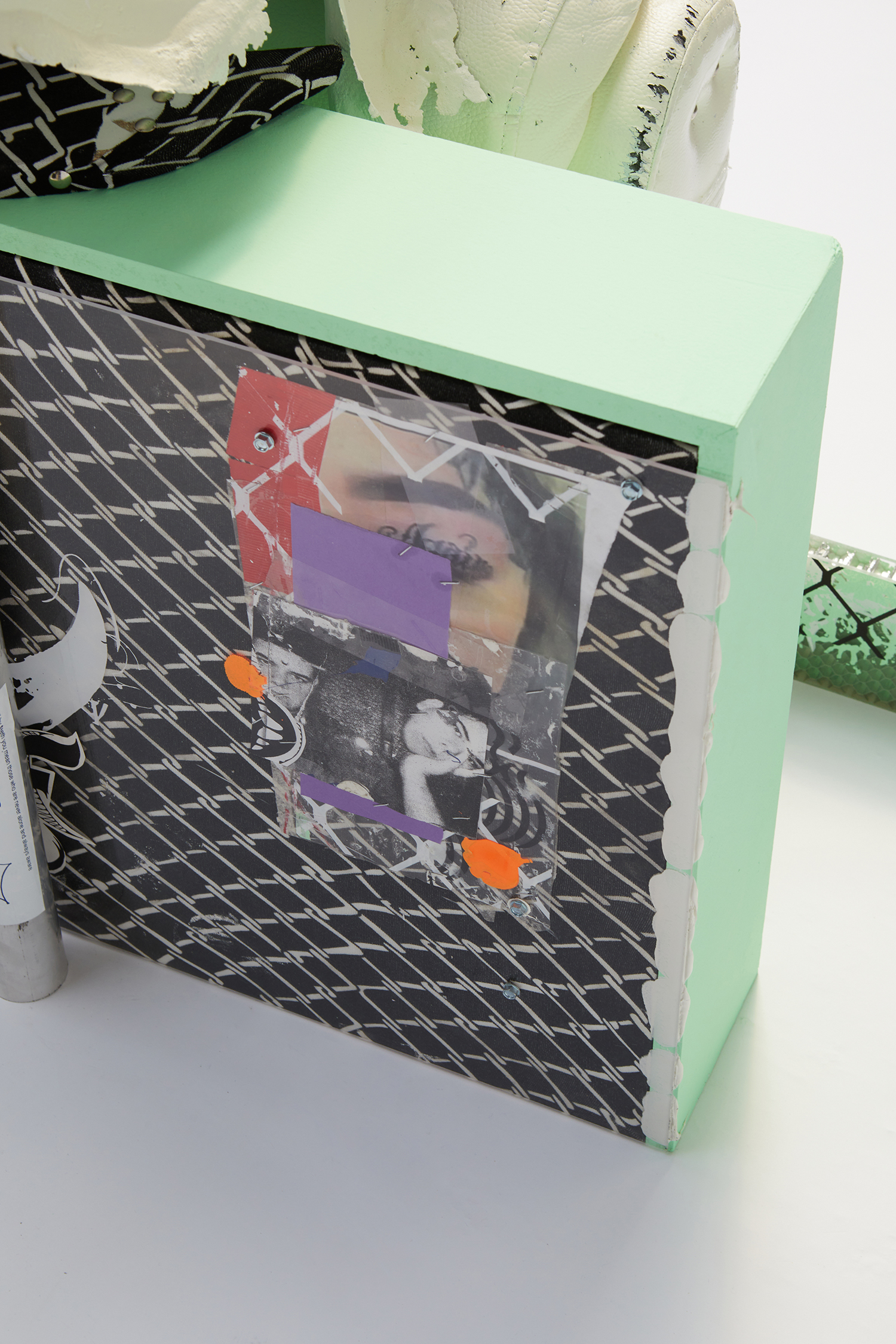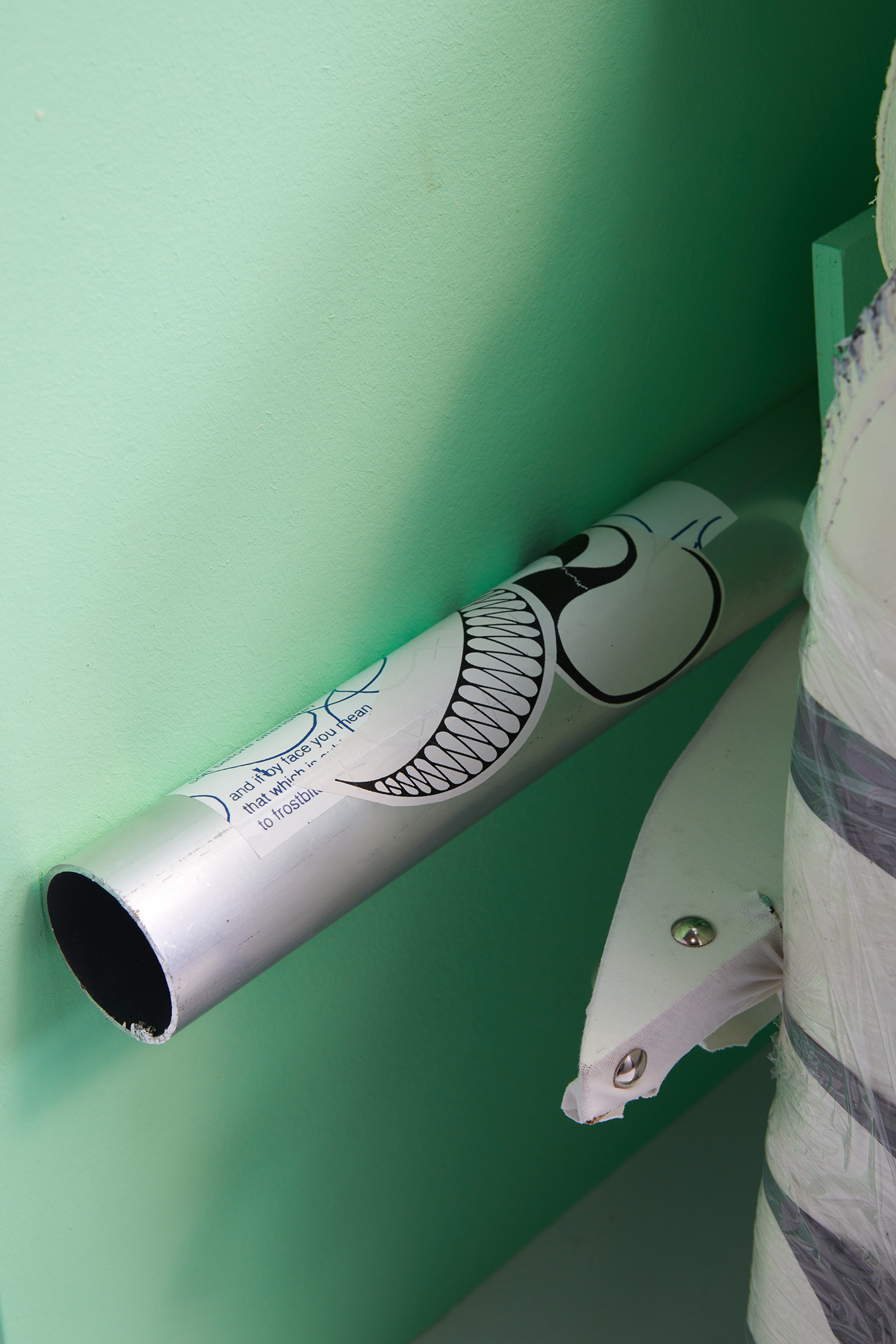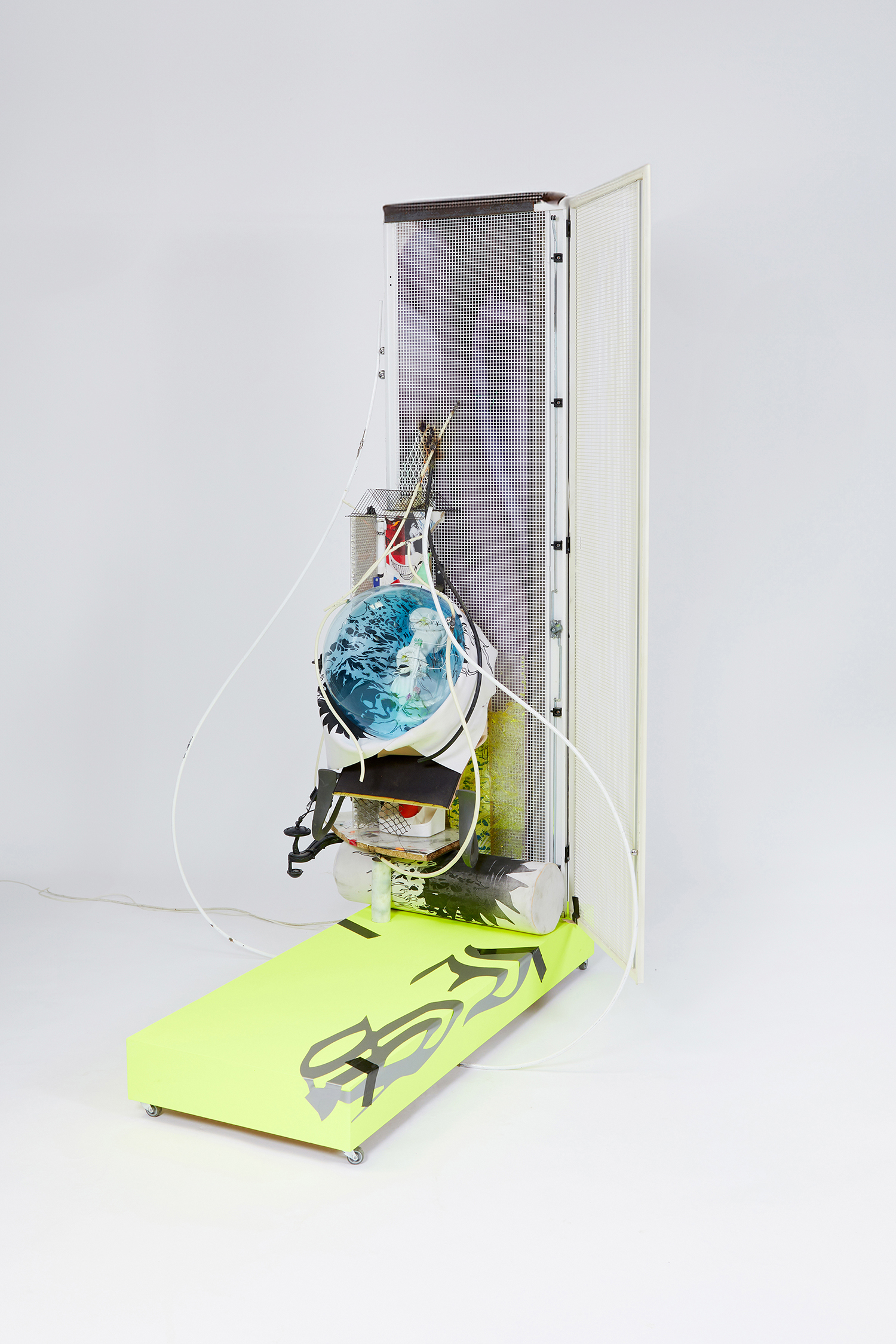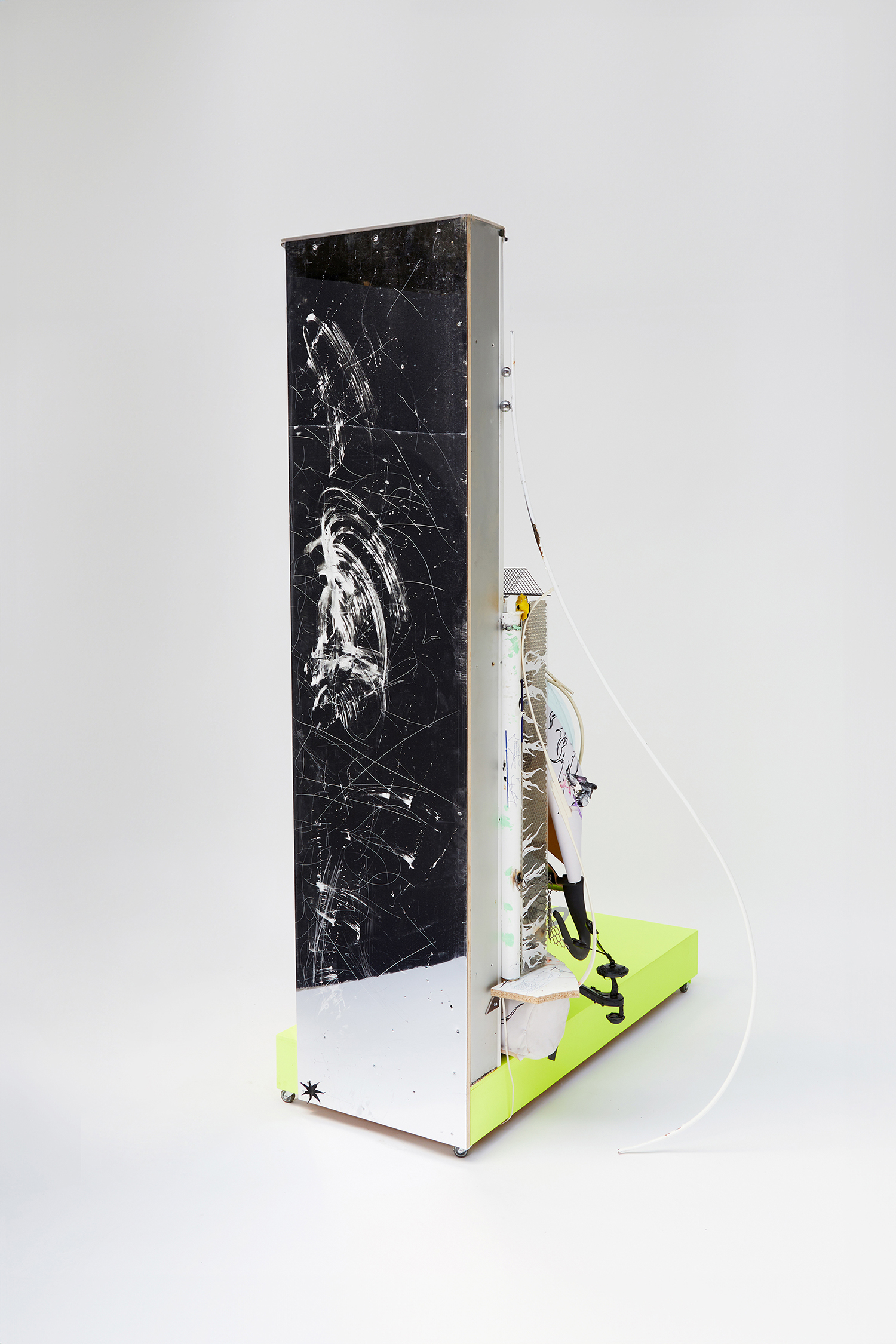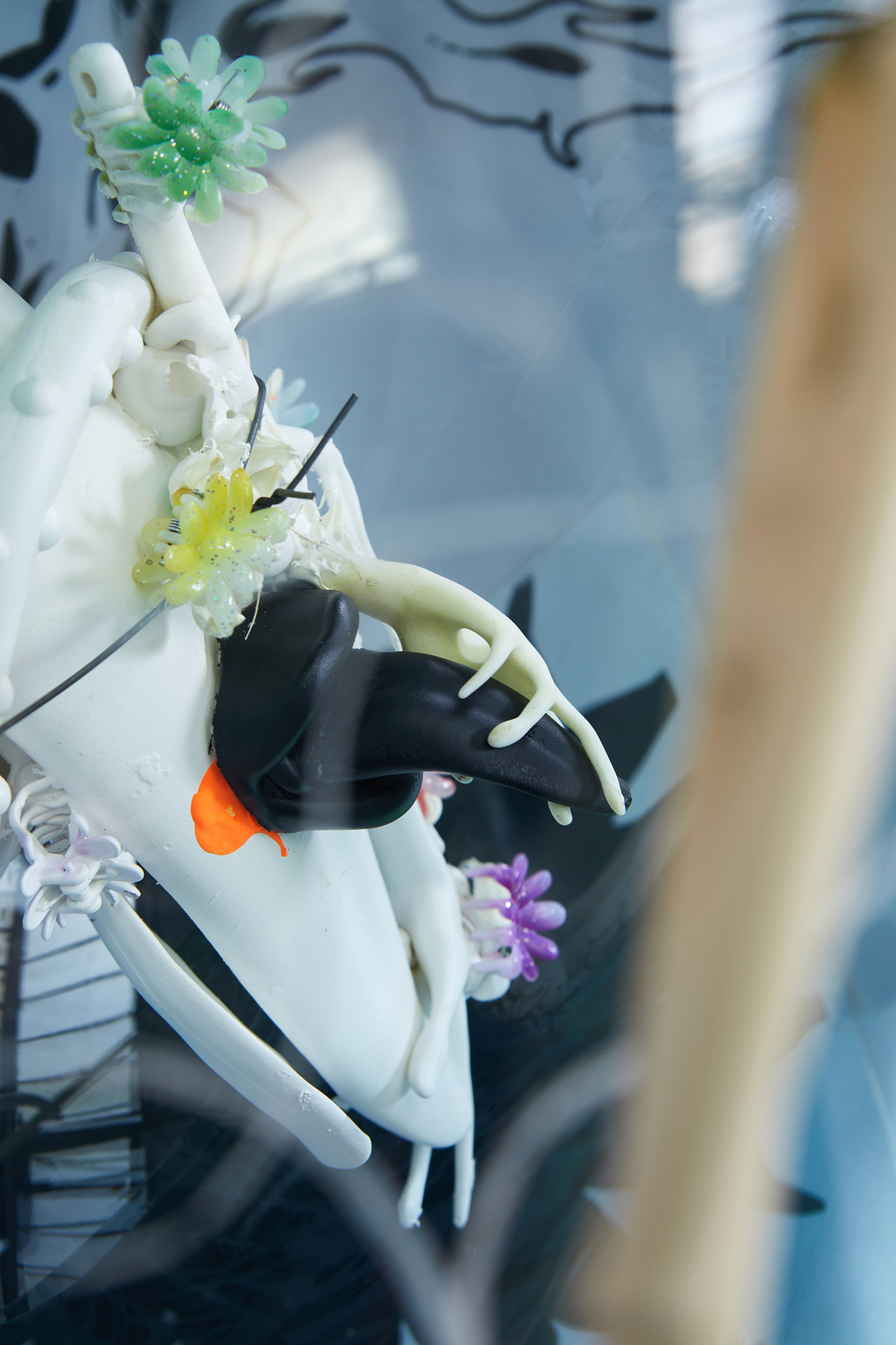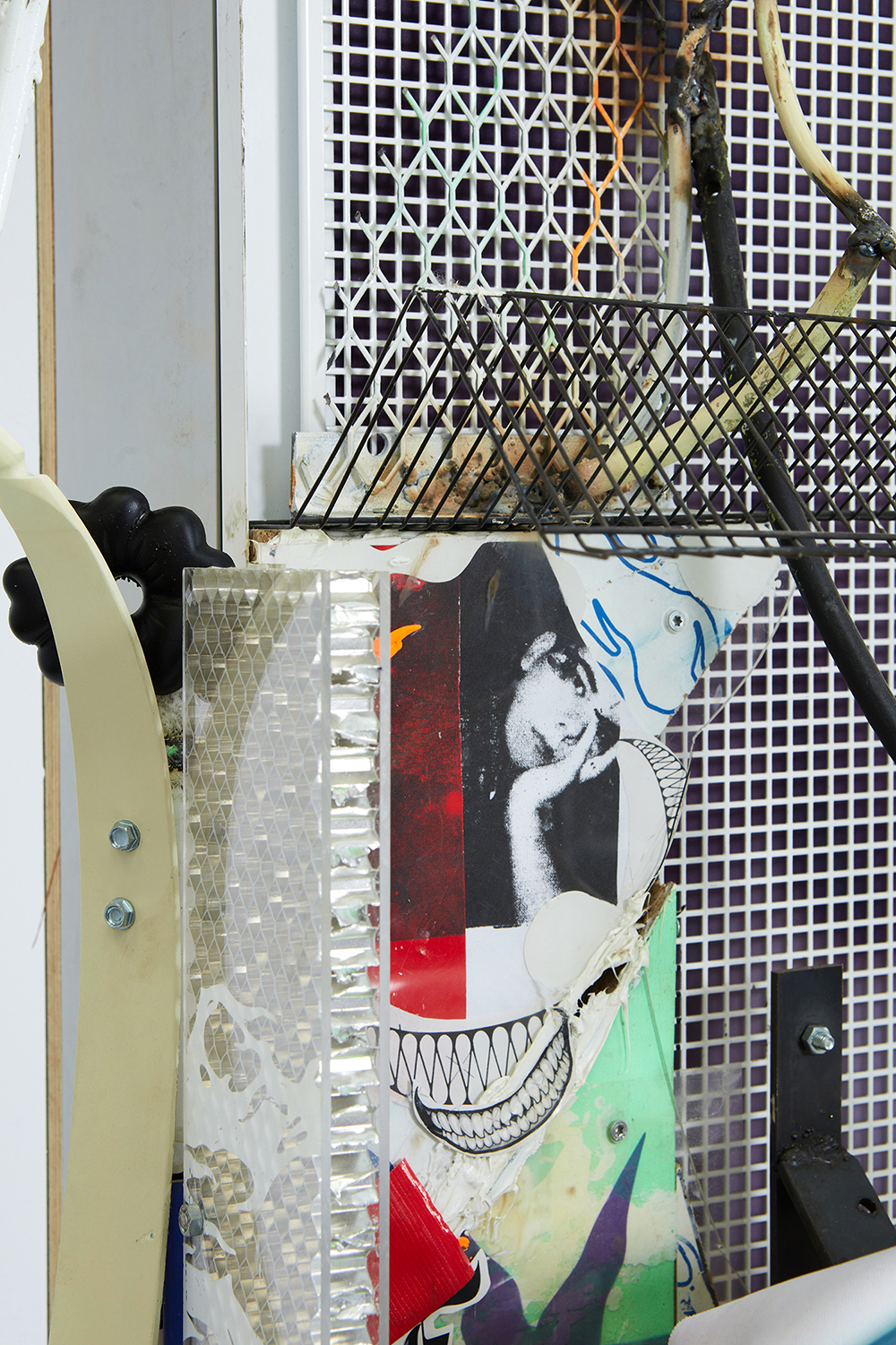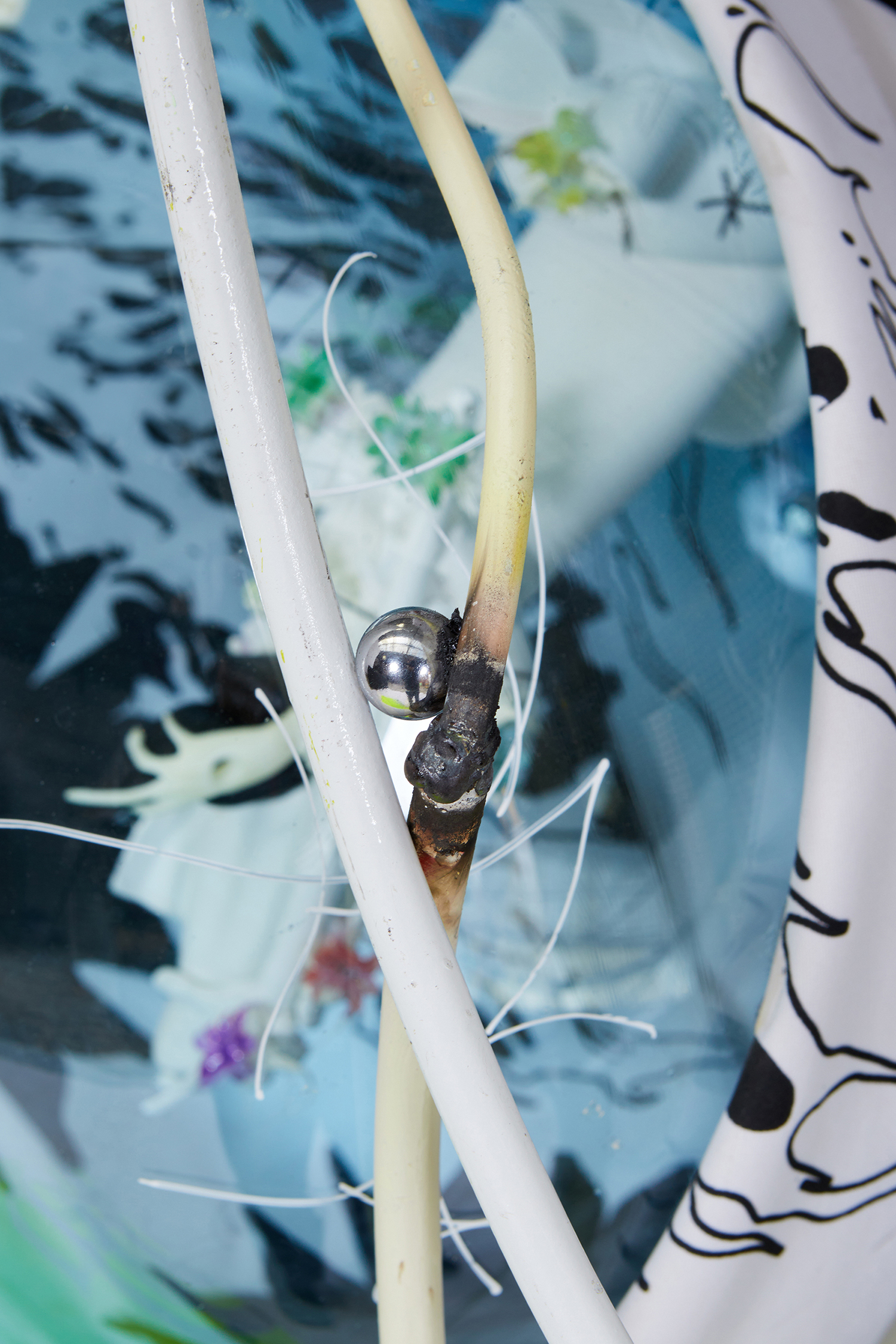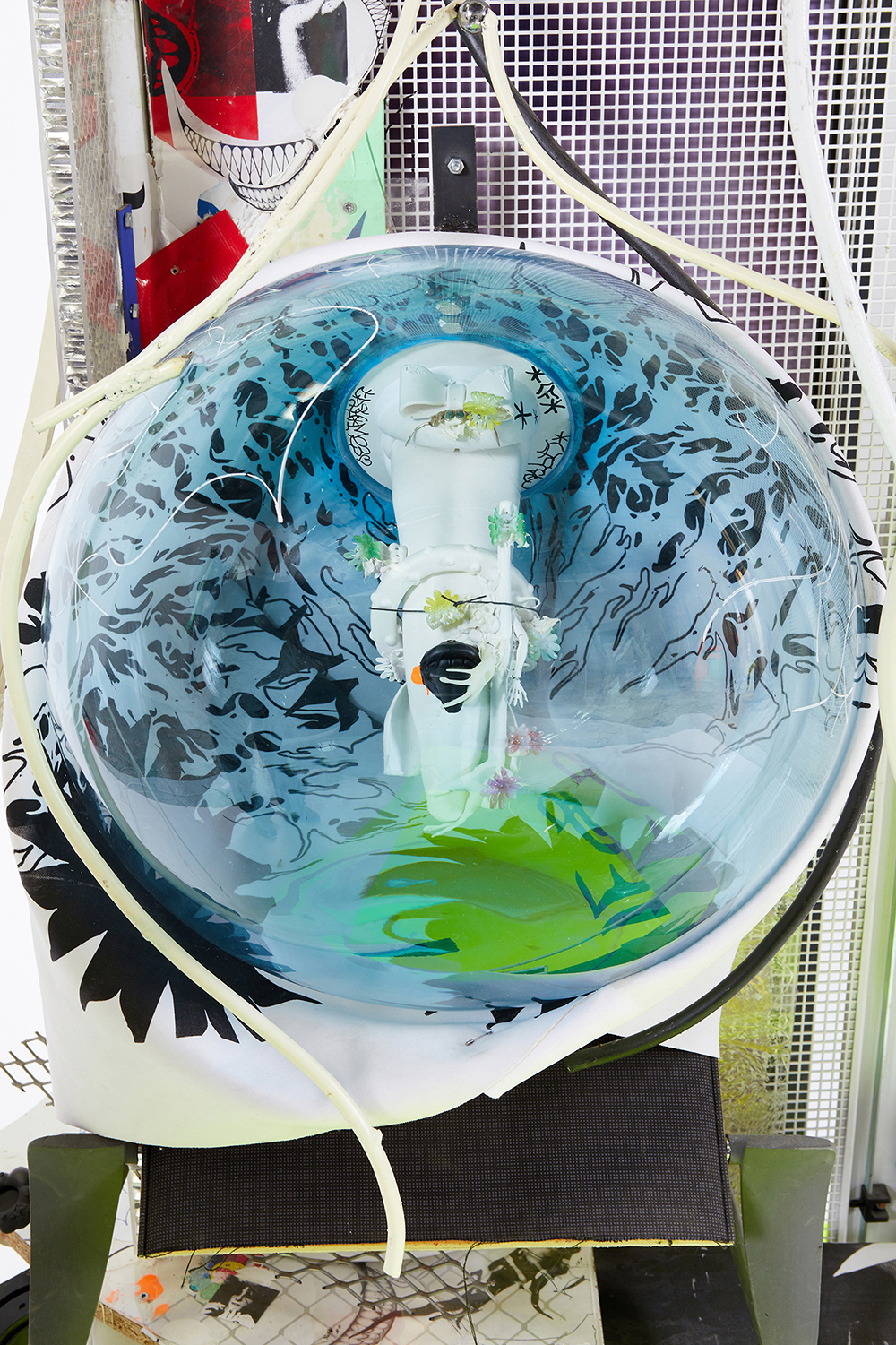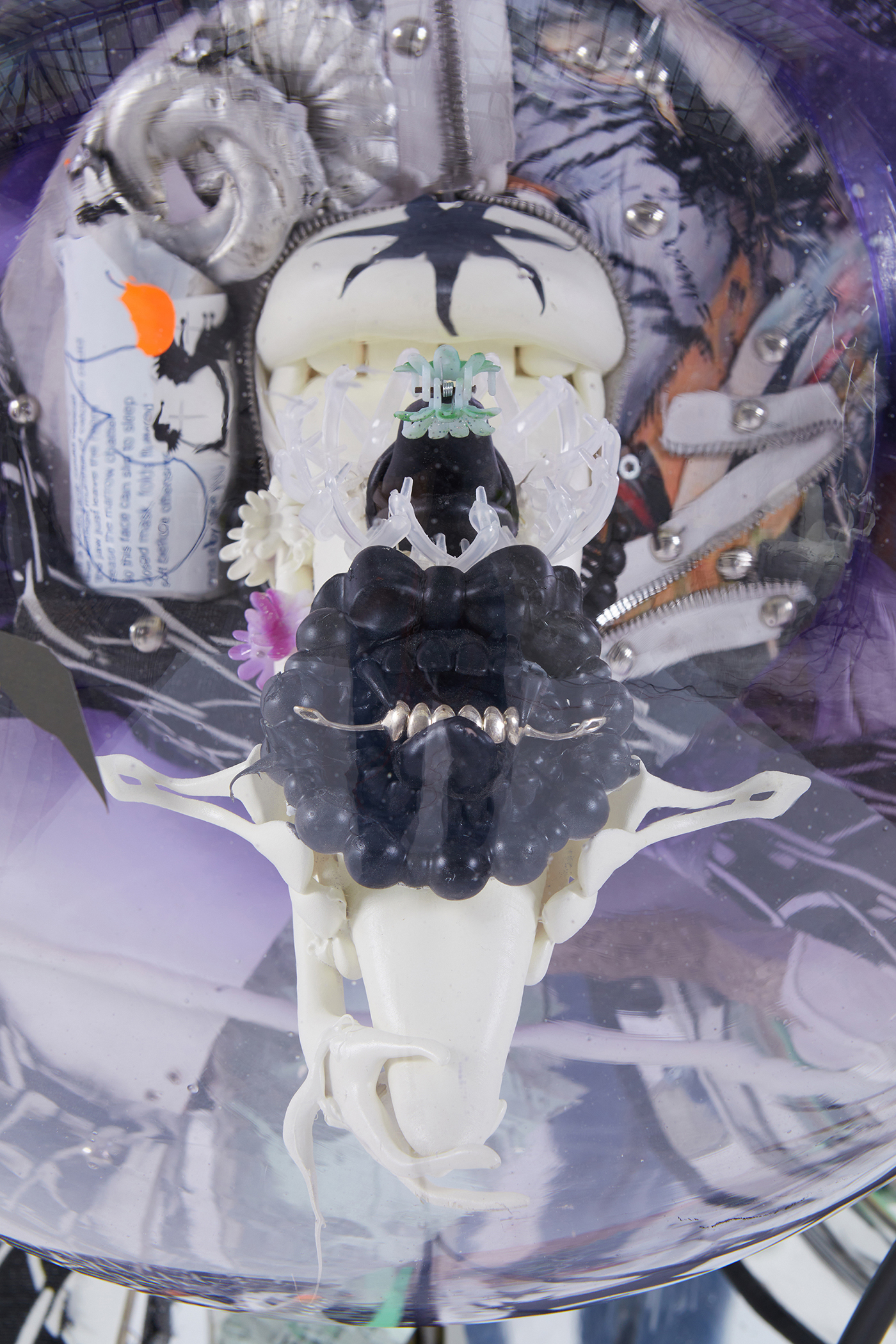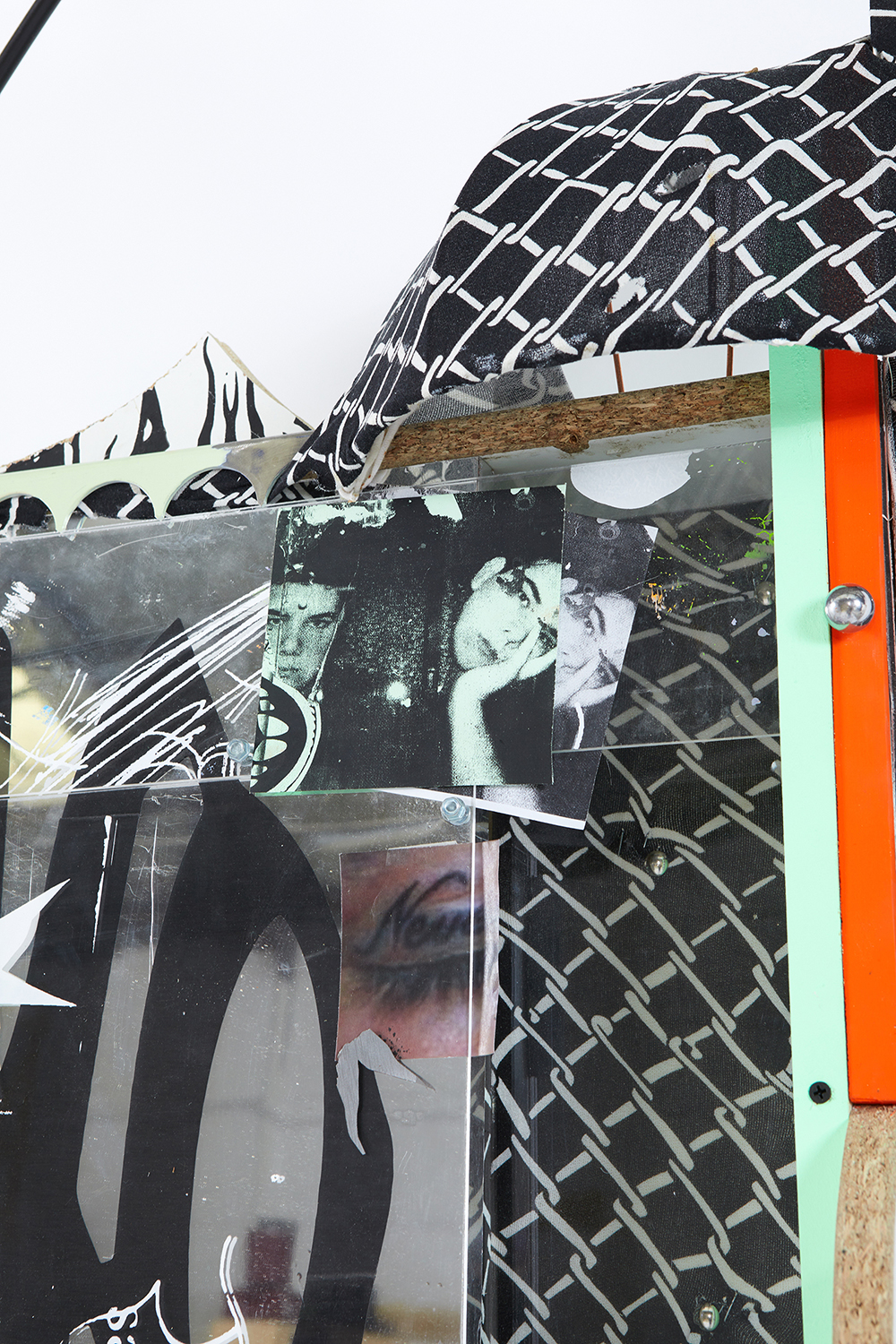Carte Blanche à David Douard with Nicolas Ceccaldi , Valerie Keane and Antoine Trapp
inner GLOw’ replica
June 04, 2024 — September 30, 2024
With inner GLOw’ replica, David Douard is the first international artist to be given carte blanche by Basement Roma. Inspired by the format conceived and produced for years by the Palais de Tokyo in Paris, the Basement Roma exhibition program now draws on one of the central figures of a new digital grammar which is translated by the artist into a complex combination of materials, forms, and expressive means. Here, waste elements, fragments, objects, debris mix with sounds, texts and images taken from the Internet, creating hybrid, disconnected environments, infected with new narrative germs, which replace the real world and profoundly transform it. Douard’s works burst into the exhibition itinerary by altering the spatial coordinates through temporary walls, passages, obstacles and shortcuts and the reactivation of multiple recovered and assembled elements, thus physically and mentally intertwining with the work of the other artists involved. Thus starting from the most authentic roots of his work, Douard is called to be the leading figure of a mash-up with other artists who, due to affinity, language, or medium, fit into his artistic production vision. Starting from the gif novel Zac’s Haunted House by the American author Dennis Cooper – a new graphic novel in which a sequence of images taken from the Internet and divided into chapters replaces traditional literary grammar – the artist highlights the translation of a new relationship between language and the Internet.
The exhibition converges on the idea of a constant ambivalence of the role of the spectator, an active observer but also an unconscious accomplice of a new connectivity that calls into play the physical, objective and sculptural dimension of the work and the blurred contours of a new digital permeability. The space, only apparently neutral to new technologies, is thus reread as an unprecedented repertoire of poetic fragments, capable of taking on unexpected forms in the context of the détournement carried out by the artist, in which each element translates into another, in a gaze never univocal but plural. If Antoine Trapp translates his research through a notebook of images created through AI and transferred to the analogue support of an old folder, Nicolas Ceccaldi’s work Untitled (Winnie the Pooh) speaks of a special, intimate and domestic bond with the work, where a security camera hidden behind the apparently harmless eyes of a Winnie the Pooh plush brings the artist’s daily experience into a public, choral and collective sphere. Thus, Valerie Keane’s works, with their assemblages of mechanical materials processed into abstract and elusive suspended sculptures, betray an obvious tension between movement and control, between fragility and strength, between rudimentality of materials and elusiveness of form. A tension called to resolve itself in the composite balance of her figures and the constant drive between presence and absence, between form and space, between solemn and material.
Hence, a mix of references, quotes and allusions translates the labyrinthine installation of the exhibition into a space of its own. The works become part of a single landscape, a driving force of expressive means, languages, and phonemes, which are articulated into a single whole, egalitarian and multiform at the same time.
Text by Ilaria Marotta
(+) On this occasion, Lenard Giller’s engraved aluminum door plate “There is more within me” inaugurates the program of La Rampa’s outdoor projects.
‘Welcome Home’ should be written on the welcome mat at the entrance of inner GLOw’ replica. And while it isn’t explicitly stated (words are scarce, but present within the show), one quickly grasps that this Carte Blanche orchestrated by David Douard with works by himself, Nicolas Ceccaldi, Valerie Keane, and Antoine Trapp, is somewhat of a domestic display: an inner space, the inside of a body, a cave, a (literal) Basement. David Douard’s scenographies often share a common trait: on the surface, they seem hard to read. Yet, they always end up seizing those who join them, as if one were there to stay, hang out for days, melt into his sofas, and spend hours obsessing over the carefully accumulated objects, glimpses of words, and teenage-like images that slowly reveal themselves as one looks closer. The exhibition begins and ends with Zac’s Haunted House, the GIF-based novel by American author and poet Dennis Cooper. In this work, Cooper abandons words in favor of a visual narrative that explodes language as we know it, ushering in a pre-meme era of universal horror. This wordless, internet-fueled fiction embodies the poetic code of this mash-up show: an acid loop of both romance and terror.
As if continuing an image-based slightly perverse conversation, Antoine Trapp’s binder hangs on the wall of Basement Roma, featuring around 250 pictures depicting AI in domestic and creepy romantic contexts. Created between April and now, this folder acts as a metaphorical corridor to the other side of the IRL. Trapp explains, “When considering keywords, ‘passing’ stands out, referring to ‘straight passing’ or ‘real passing,’ like a generated image passing as a photo.” His and David Douard’s fascination with the idea of ‘auto-cannibalism’ and ‘autophagous loop,’ are brought to the surface through the binder. This concept is echoed in an article on the SUPA’s website (a company that specializes in advanced AI solutions, focusing on improving AI reliability and performance), which discusses the idea of AI cannibalism: “Training AI on its own content can lead to a form of ‘AI cannibalism,’ where the model continually consumes and learns from its own outputs.”
Within this space of disturbances, Valerie Keane’s work offers reassurance. It’s like a ‘necklace or a ring,’ an ornamental barrier that makes you feel good and that you can’t leave the house without, lest you feel naked and vulnerable. Valerie Keane’s sculptural works, consisting of two sharp hanging sculptures, act as ornamental entities for something intangible within the space, almost like a soul in need of protection. Douard’s joker smile looks into them, adding another layer to the scene: these sculptures, devoid of any visible connection to the internet (but not to technology), evoke the presence of a ghost or a fantastical ornament hanging from the ceilings. They resemble a Duchampian “machine solitaire,” a machine without a function, existing purely as an enigmatic presence.
Finally, Nicolas Ceccaldi’s Untitled (Winnie the Pooh), sits on the floor of the show. “Viewers will be watched by the Winnie the Pooh, just as my family and I were watched for all the years we had him in our house. He was so close to us,” David Douard explains. In this show, the life of the exhibition unfolds under the spying camera-nose of the Pooh: a slightly creepy, childlike recorder of life. All works and everyone who spends time in this space will double through David Douard’s mirrors featured in two of his works. The interplay between accidental reflections, and AI’s infinite reproduction, weaves a common thread through seemingly mashed-up elements. Yet, nothing feels desperate in this space. If inner GLOw’s replica was a movie scene, one could imagine a character in it screaming “Let me in! Let me out!”—changing their mind in a loop, wondering on which side of the door they’d rather be.
Text by Sofia Gallarate
Supported by
Fondazione Nuovi Mecenati
In partneship with
Villa Médicis. Académie de France à Rome
Caption:
Carte Blanche à David Douard with Nicolas Ceccaldi, Valerie Keane and Antoine Trapp
inner GLOw’ replica
June 04, 2024 — September 30, 2024
Installation view Basement Roma
Photo: Daniele Molajoli
Courtesy: the artists and Basement Roma
David Douard’ single works:
Photo: Alexis Raimbault
Courtesy: the artist


